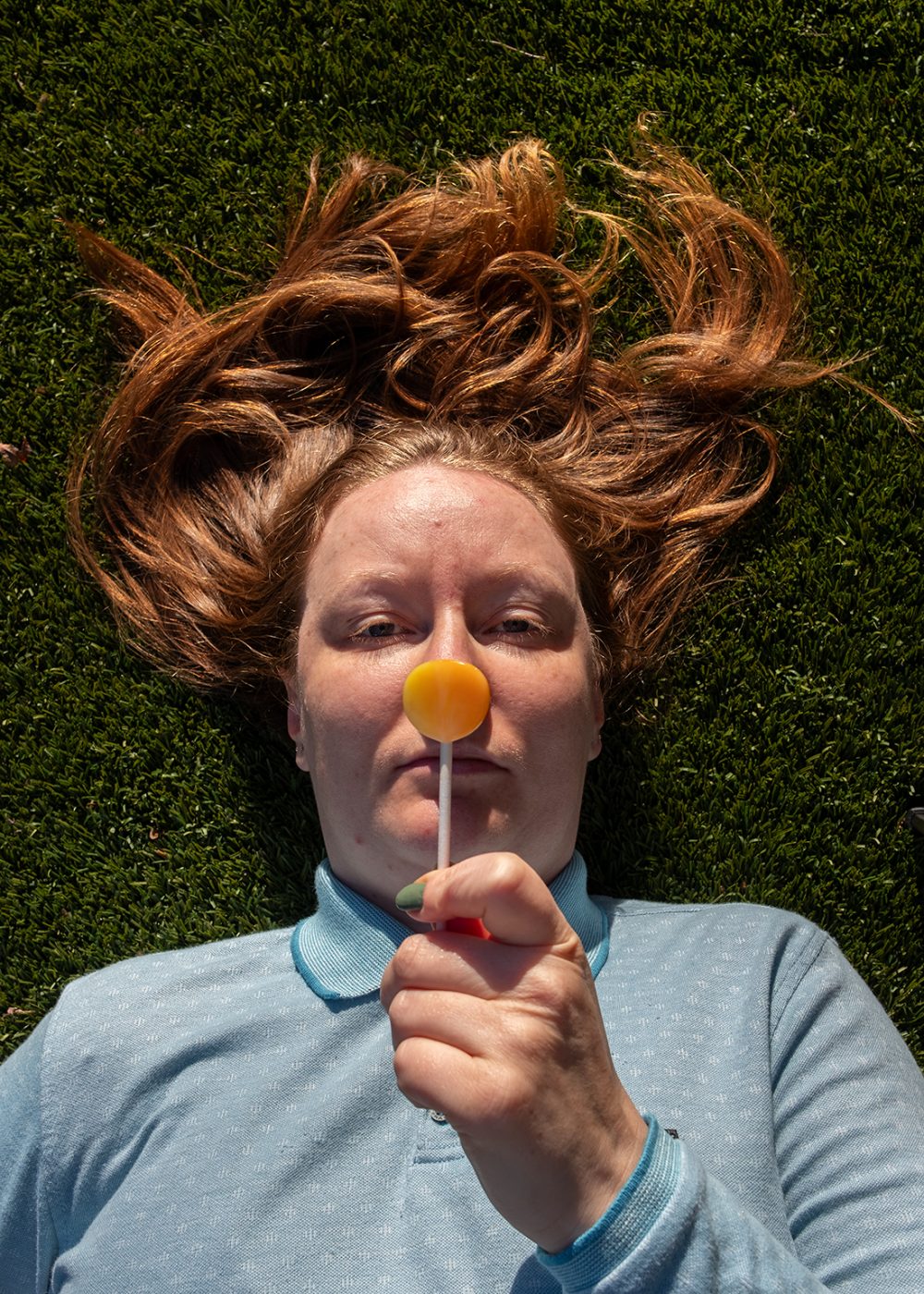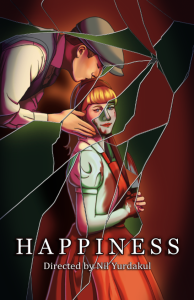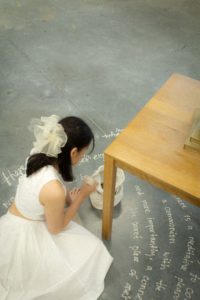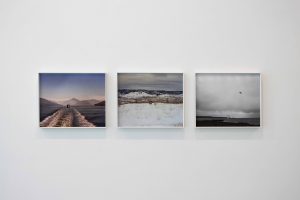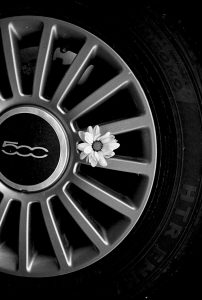- #Activism
- #Body
- #Care
- #Community
- #Conceptual
- #Connection
- #Contemporary
- #Documentary
- #Embodied
- #Emotion
- #Family
- #Healing
- #Health & Health Care
- #History
- #Identity
- #Installation
- #Mental Health
- #Mixed Media
- #Mystery
- #Performance
- #Personal
- #Photography
- #Portrait
- #Reflection
- #Relationships
- #Self
- #Self-portrait
- #Series
- #Social
- #Sound
- #Wellness
- #Women
Headspace
Andream
See it On Campus: Level 2
Visitor InfoMedia Gallery room across from the cafeteria
ECU Award Recipient
John C. Kerr Chancellor Emeritus Awards for Excellence in Visual Arts – Winner
Saralee James Memorial Award – Winner
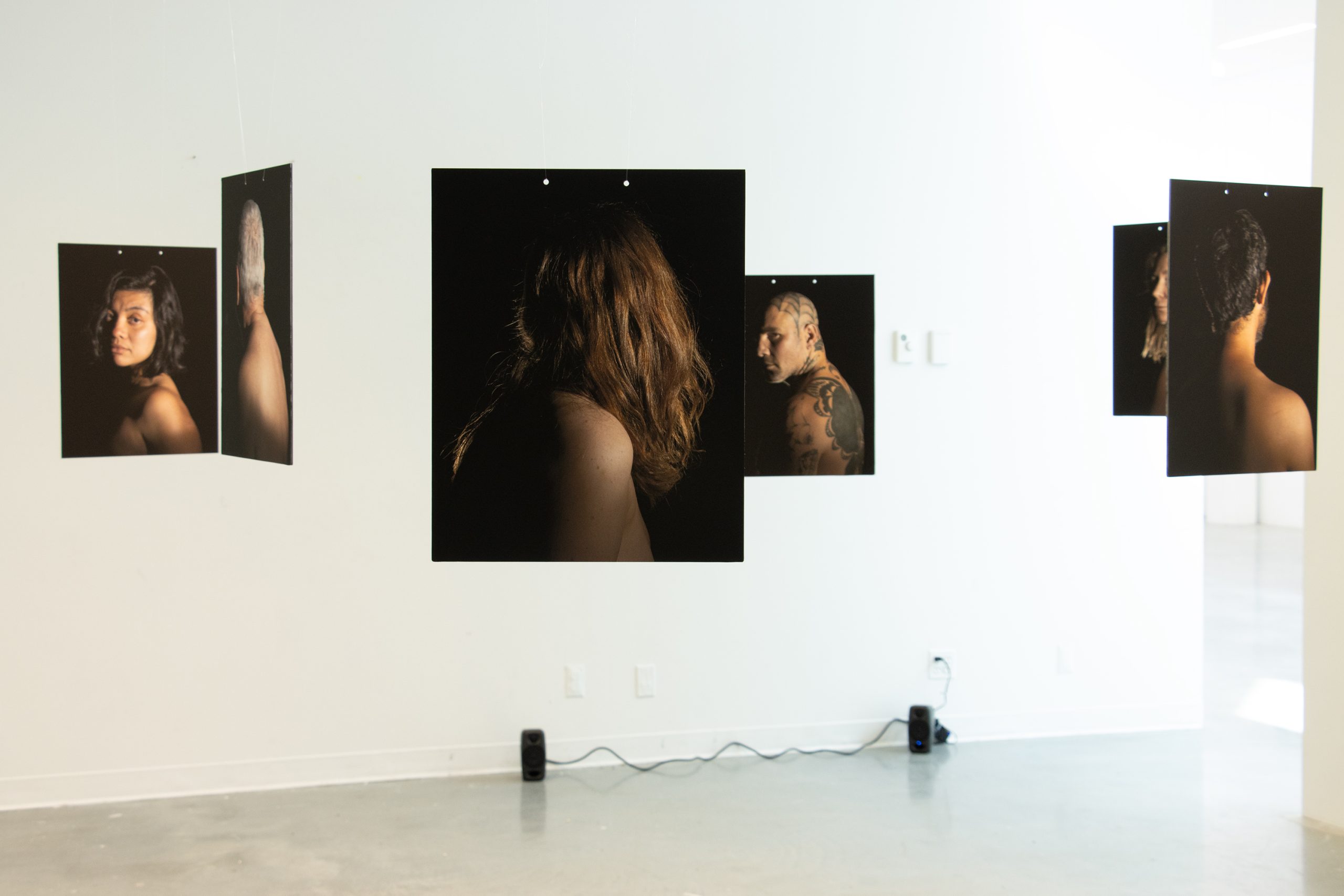
Artist Statement
Headspace is an ongoing project of an accumulation of studio portraits started in Sept 2023. A connection is made between the photographer with anxiety and depression, and sitters who responded to a Craigslist post requesting volunteers identifying with mental health issues interested in the project. The space of encounter is a stripped-down studio with a spotlight and a stool in a dark environment. The resulting portraits are a dialogue between the artist and the sitter. The viewer is an outsider witnessing a select and tight gaze of the subject.
Mental state of mind is explored in an external, physical space. Suspended portraits confront the viewer while obscuring parts of the body, front and back. The viewer walks to the center, where they are able to view all the front facing portraits; a mirror of the anxiety within the artist’s mind. The artist includes herself within the project, desiring to resituate the aura within the self-portrait.
The flatness of the panels and the use of theatre-like chiaroscuro indicate the missing information, unable to be portrayed in a single portrait sitting. Sharp shadows and chromatic blacks, along with haunting direct gaze with the viewer challenge portrait photography aesthetics. The work is an embodied response to the documentary style in photo history of people with mental health issues.
An audio piece accompanies the panels. The audio is the sitter’s responses to an anonymous online survey created by the artist, for each sitter to be able to speak about mental health, their experiences, and the studio portraits. The audio is read as anonymous, with Tyler Roth, voice actor, reading the responses.
The viewer is asked to question what assumptions are made based on appearance and their knowledge of mental health issues, what it means ‘to see,’ ‘to witness,’ and ‘to be seen,’ and to consider what is exposed when using photography to discuss mental health.

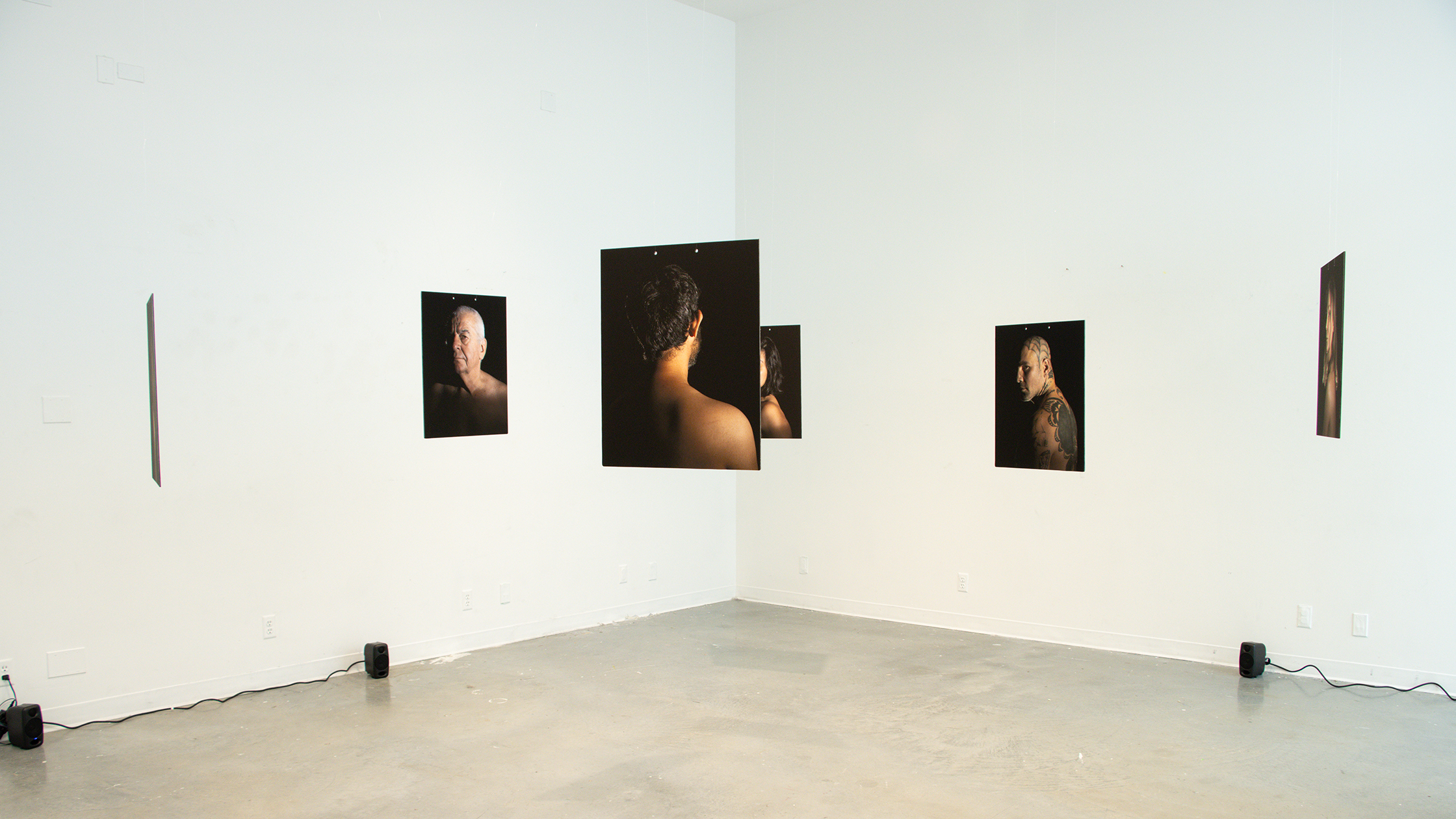
Supporting Research
Headspace offers an exploration of human experiences through personal stories. In an interview with Rajesh Punj, artist Muhannad Shono discusses the “power of narrative” (Punj). Stories “catch light in other people’s minds, and they can physically change everything around you” (Punj).
In Headspace, portraits are suspended, while a single voice shares their stories, restricting the viewer from knowing which story goes with what portrait. In the book, The Disabled Body in Contemporary Art, Ann Millett-Gallant references scholar, Rosemarie Garland-Thomson, who states that “representations cannot conform to categories of perception, and no representation is purely one-dimensional.” (12). Garland-Thomson refers to our heavily visual society “in which we are all pervasively gazing/staring at each other and forming our notions of ourselves both in identifications with and against other bodies” (Millett-Gallant, 14). Millett-Gallant talks about “the body on display (the spectacle)” and asks how you can “utilize its voyeuristic attention through artistic and political acts?” (14).
Artwork based on the topic of mental health lives on the fringes with disability studies. In their book, The Threshold of the Visible World, author, Kaja Silverman opposes “the provisional conferral of ideality upon socially devalued bodies” (4). How is the subject “psychically to negotiate [their] resulting apprehension of lack or distance from the ideal” (Silverman, 4). The subject is left with a “self-revulsion” or a complete dismantling of the “binary opposition of ideality and abjection – the notion of the “good enough”” (Silverman, 4). “We can only accede narcissistically to the principle of the “good enough” after we have been taught to exercise it in relation to other bodies, and here the image is all-important” (Silverman, 5).
In the book, Installation Art: A Critical History, author Claire Bishop suggests that installation art activates the viewer, with a need to “move around and through the work in order to experience it” which “activates the viewer, in contrast to art that simply requires optical contemplation (which is considered to be passive and detached)” (11). Headspace is participatory in that the viewer is able to physically walk amongst the photography panels and move closer to certain speakers to hear different stories.
In the section, the body of the audience, in Installation Art in the New Millennium,Nicholas De Oliveira et al. discuss how images or objects in an installation can change a viewers perspective. “The mirroring between the viewer and the viewed becomes endless” (Oliveira et al., 167). Oliveira et al. quotes Jacques Lacan: “I see myself seeing myself…I see outside, that perception is not in me…it is on the objects that it apprehends” (167).
Works Cited
Bishop, Claire. Installation Art: A Critical History. Routledge, 2005.
Millett-Gallant, Ann. The Disabled Body in Contemporary Art. Palgrave MacMillan, 2010, https://doi.org/10.1057/9780230109971.
Oliveira, Nicolas De, et al. Installation Art in the New Millennium: The Empire of the Senses. Thames & Hudson, 2003.
Punj, Rajesh. “From the Imagined World: A Conversation with MuhannadShono.” Sculpture, vol. 42, no. 5, Sept. 2023, pp. 14–25.
Silverman, Kaja. The Threshold of the Visible World (1st ed.). Routledge. 1996. https://doi.org/10.4324/9781315811581.
Exhibitions
The Show, ECU, Vancouver, BC | May 9-23, 2024
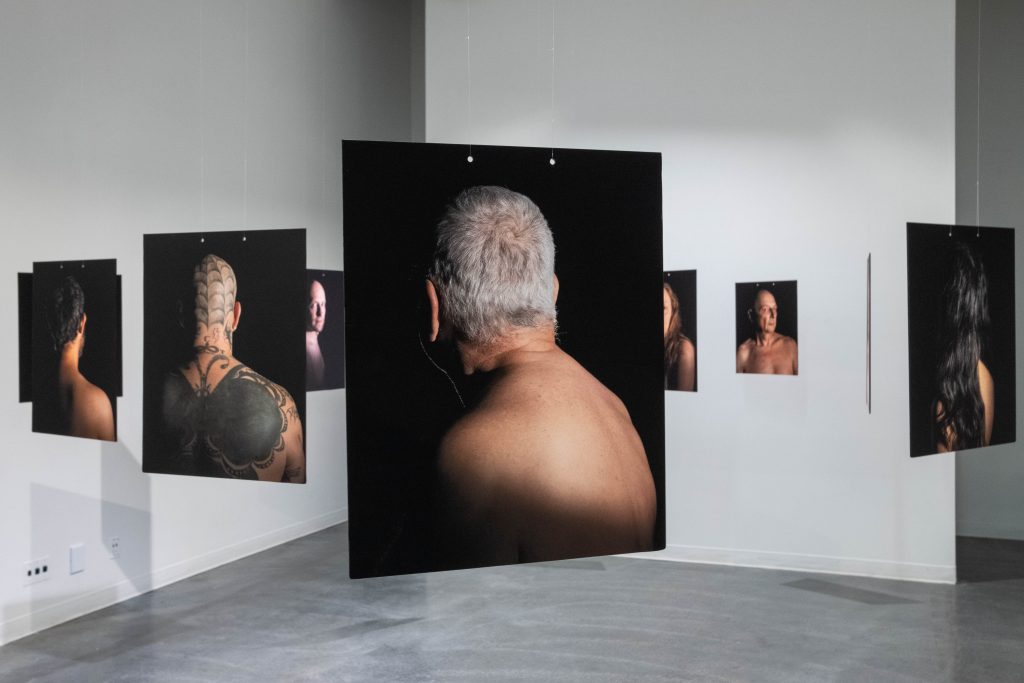
Gifts of Madness, Penticton Art Gallery, Penticton, BC | March 23-May 11, 2024
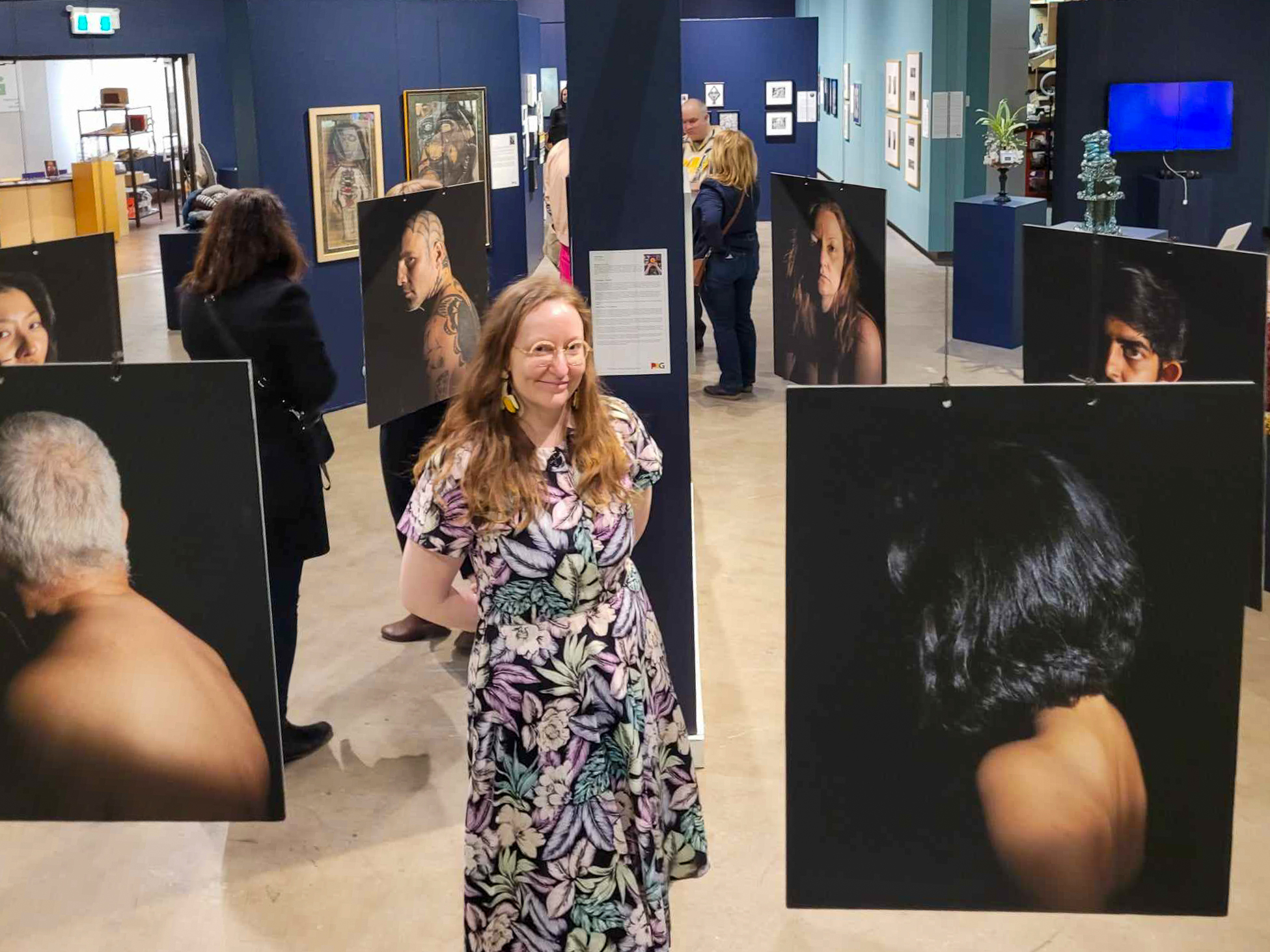
https://www.pentictonartgallery.com/exhibition-archive/gifts-of-madness-2024
Longing to See, Capture Festival x ECU, Vancouver, BC | April 3-28, 2024
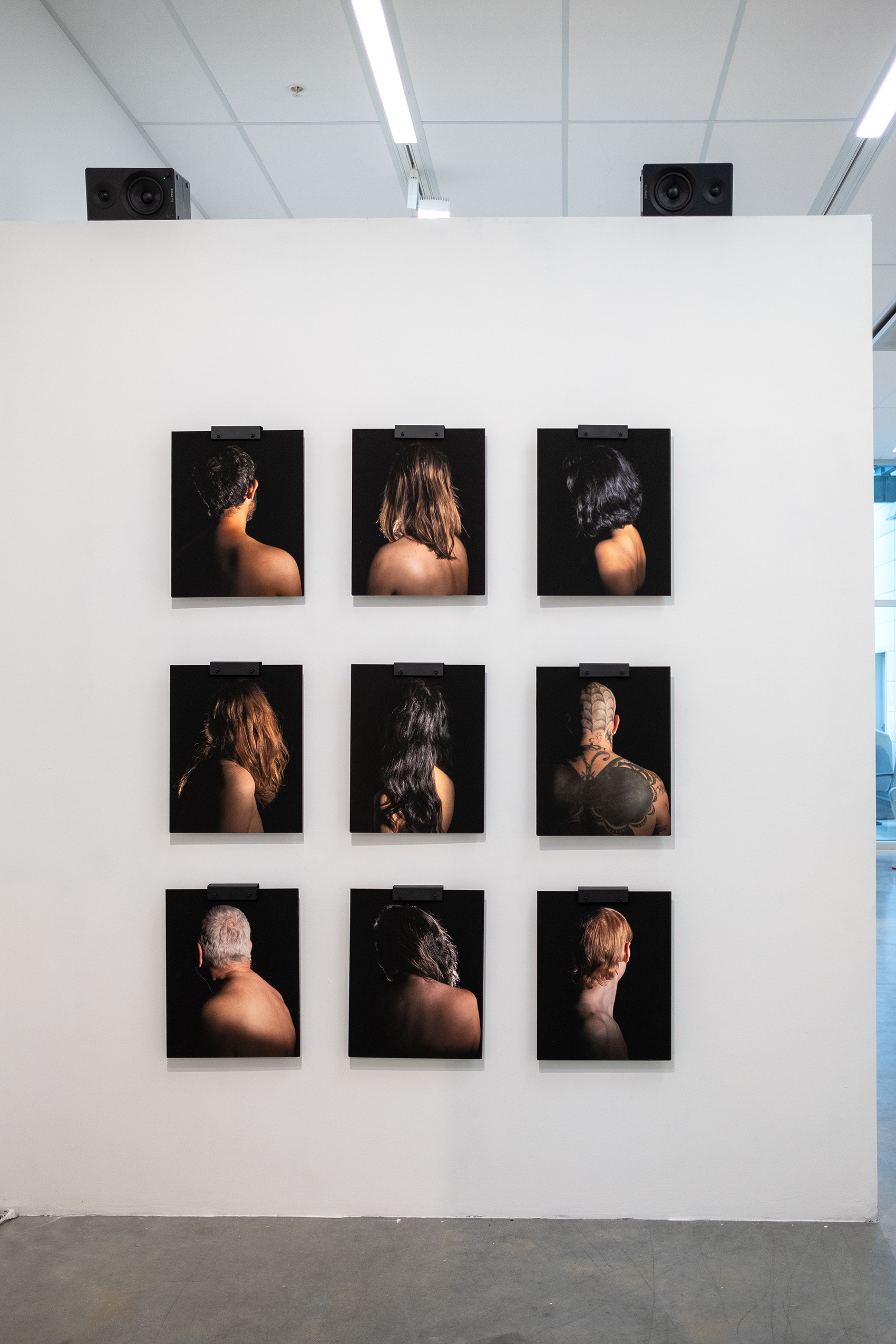
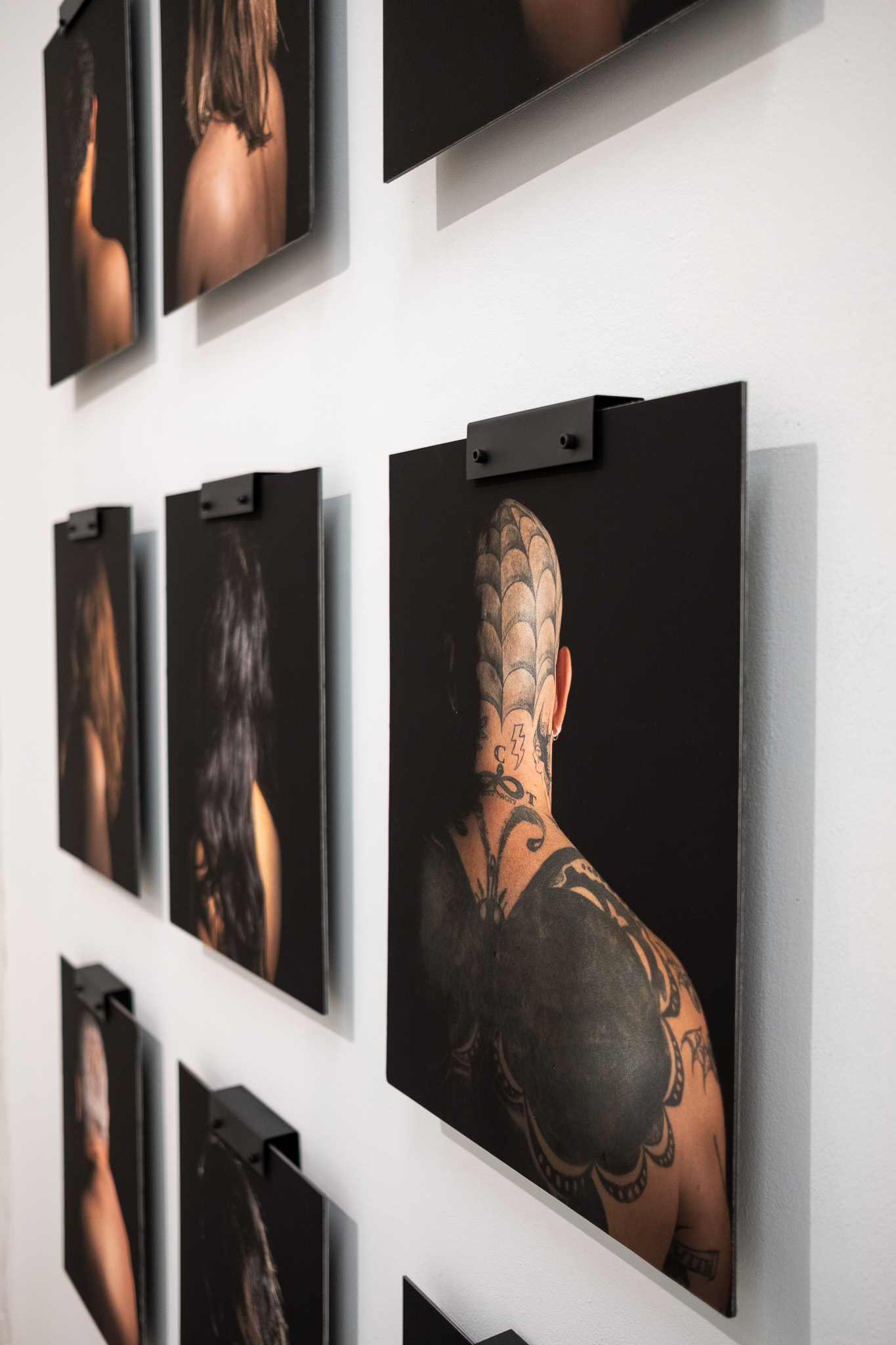
Headspace, 9 – 20″x16″ panels, archival inkjet prints, 13:36min audio loop, ECU, 2024
For this installation I fabricated metal hanging brackets that were inspired by and resemble the hangers that hold the charts of medical patients in hospitals I’ve worked at in the past. The viewer is unable to see the other side of the panels which show the front portraits.
https://www.ecuad.ca/showcase/category/capture-festival
Headspace Portraits
medium format photography in studio, by Andream
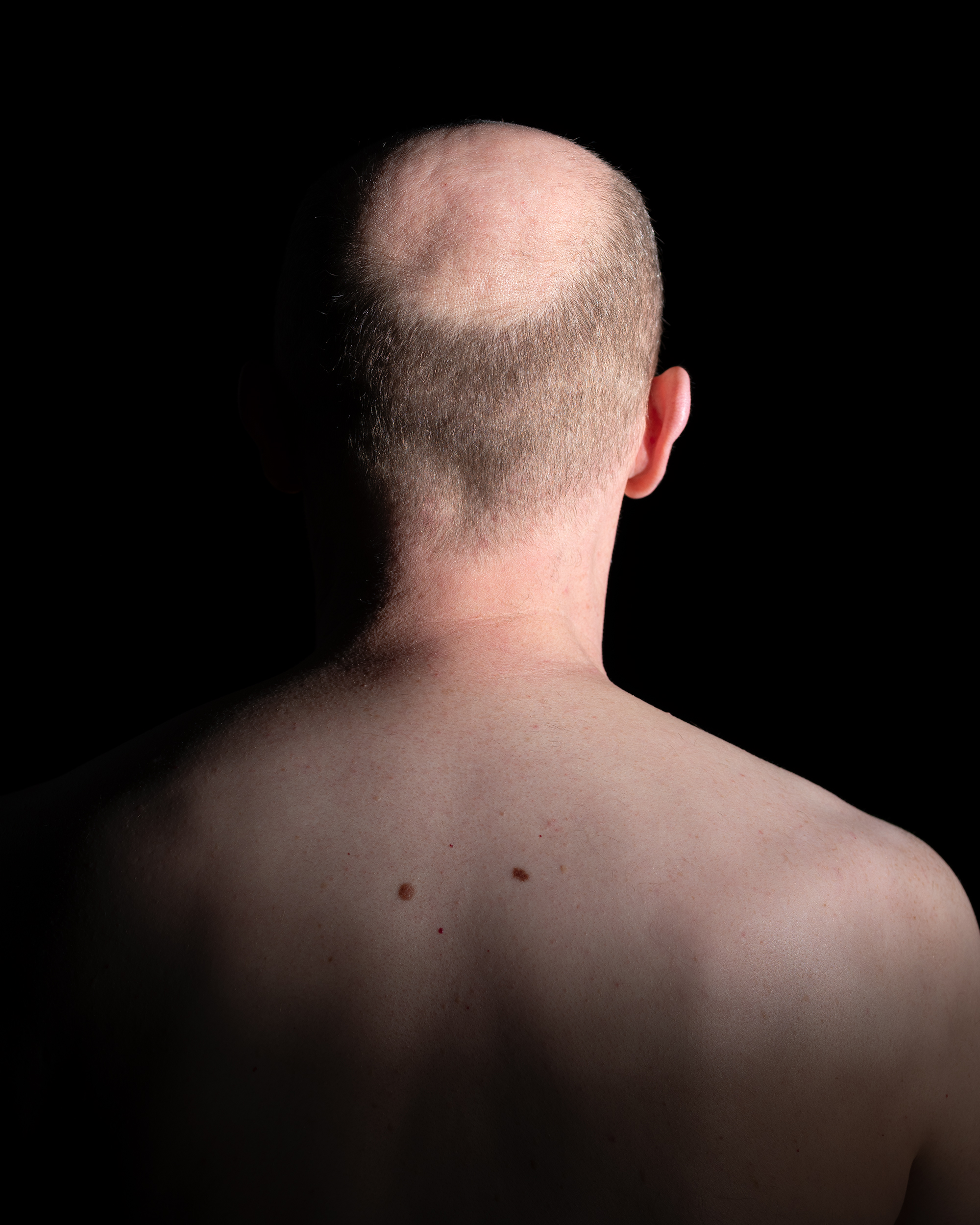
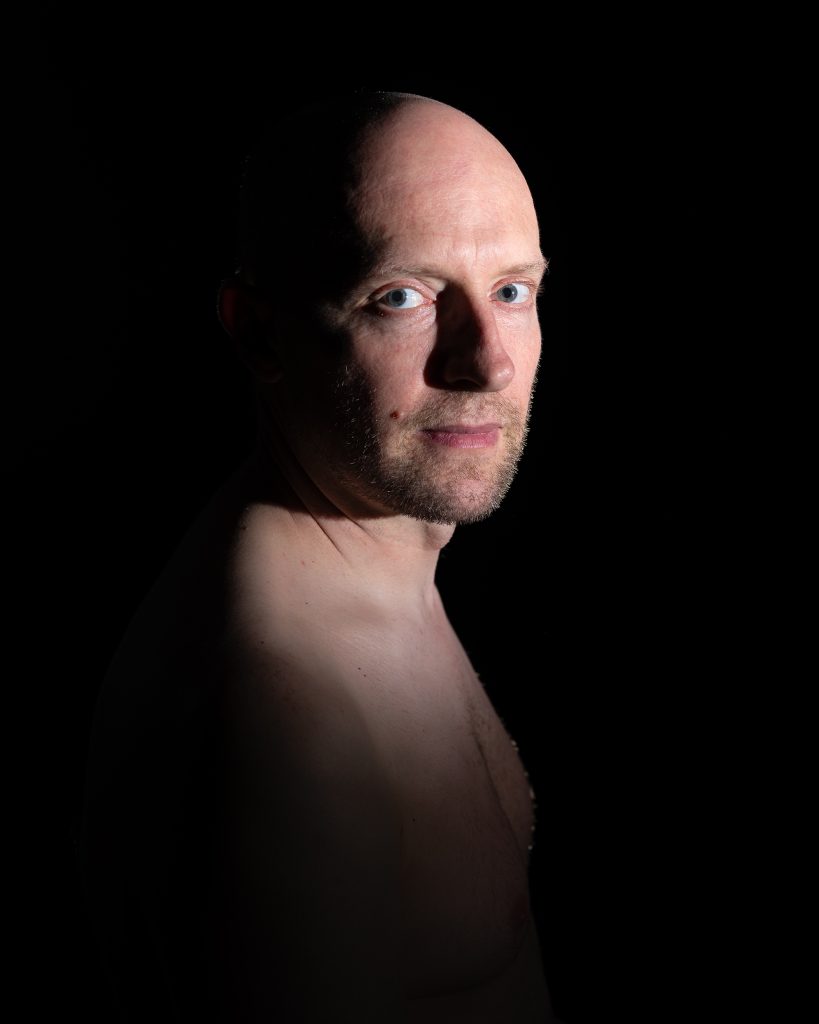
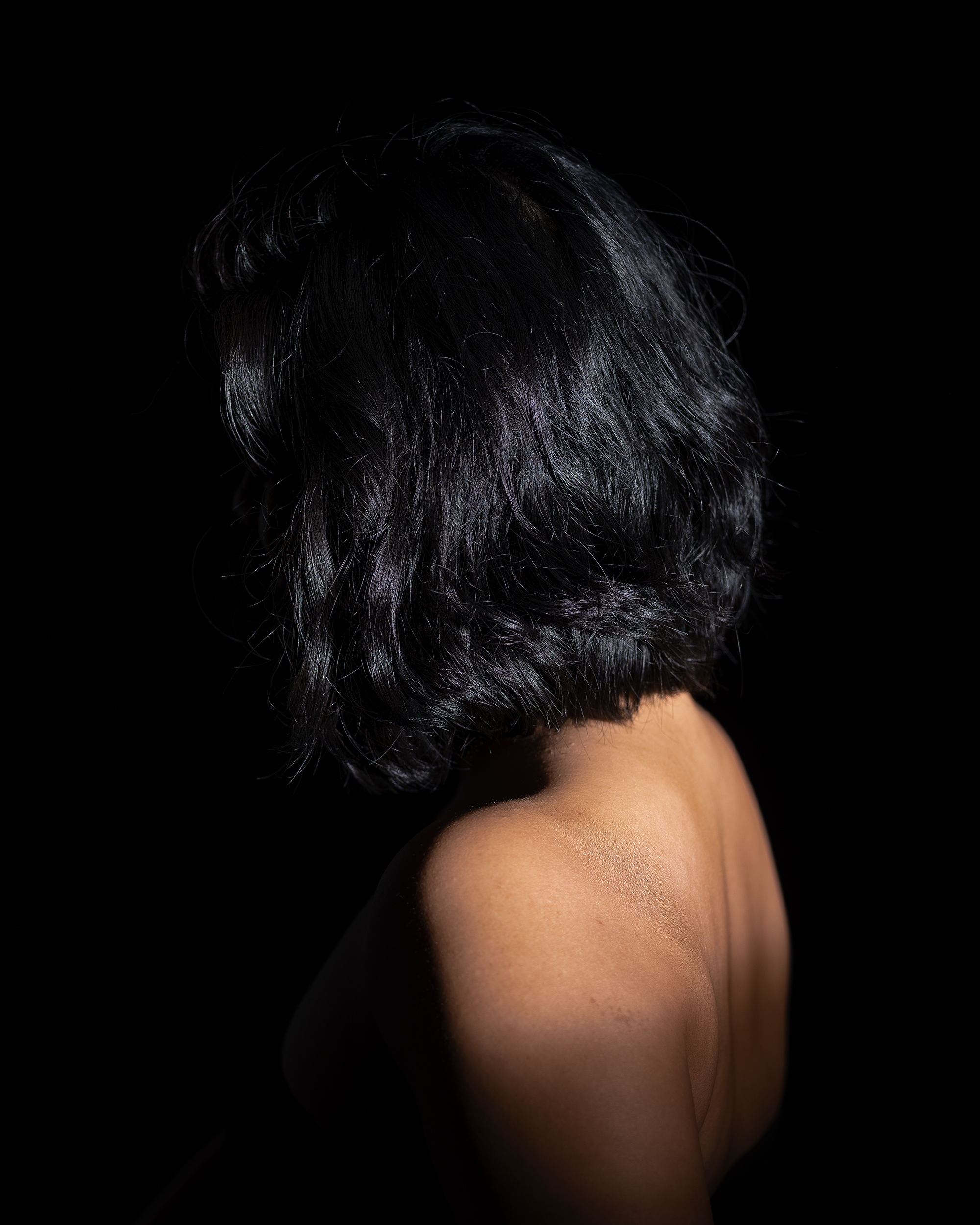
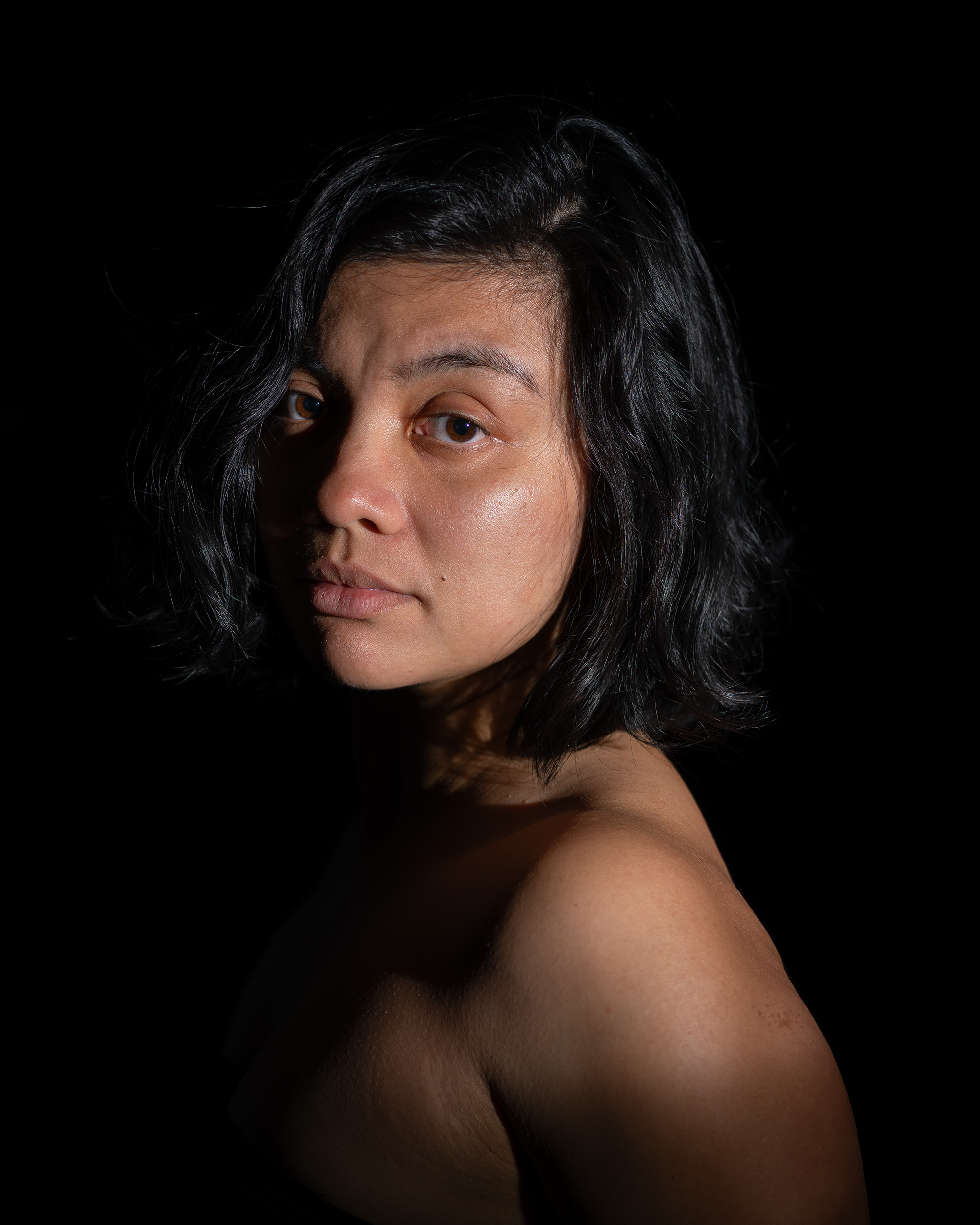
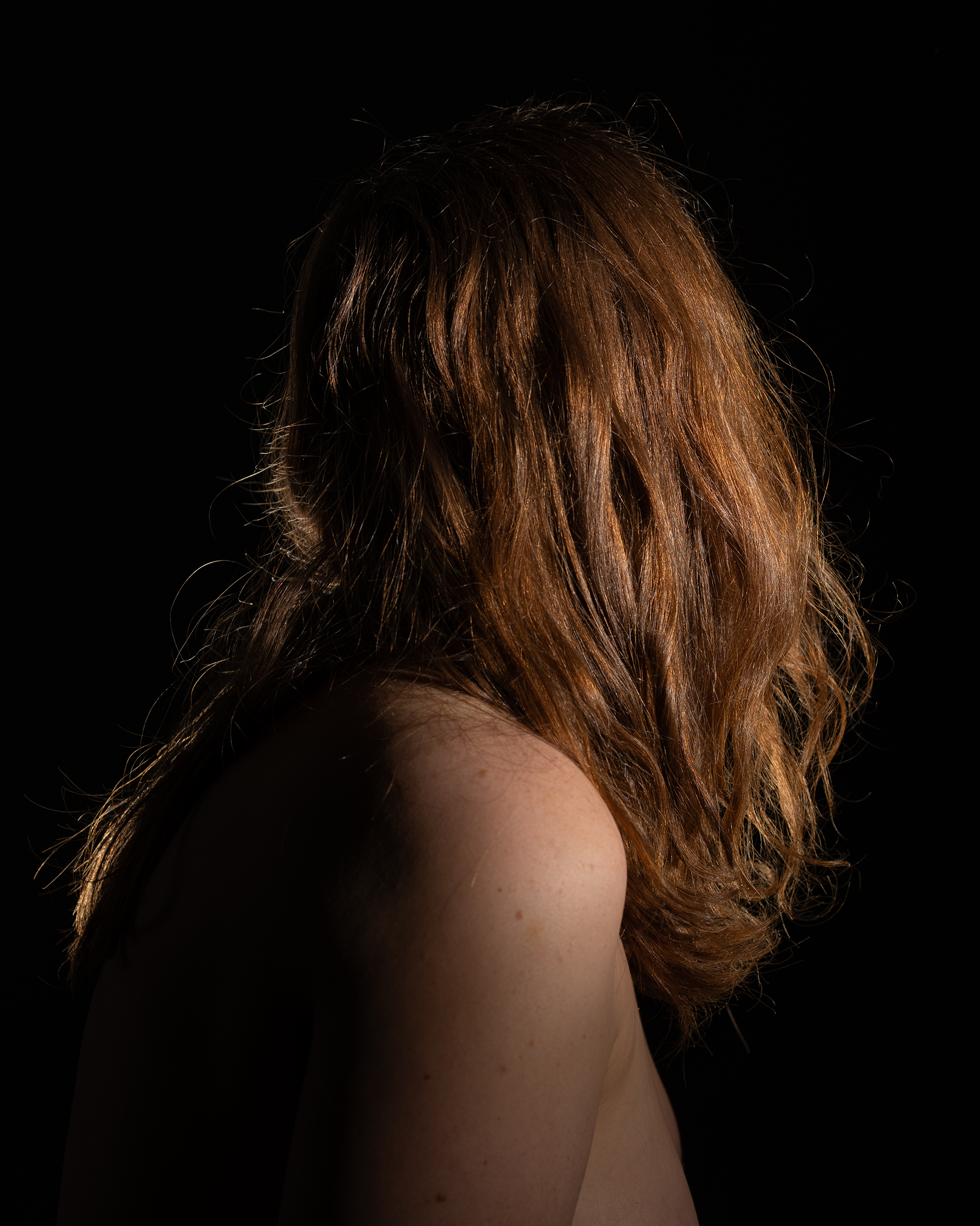
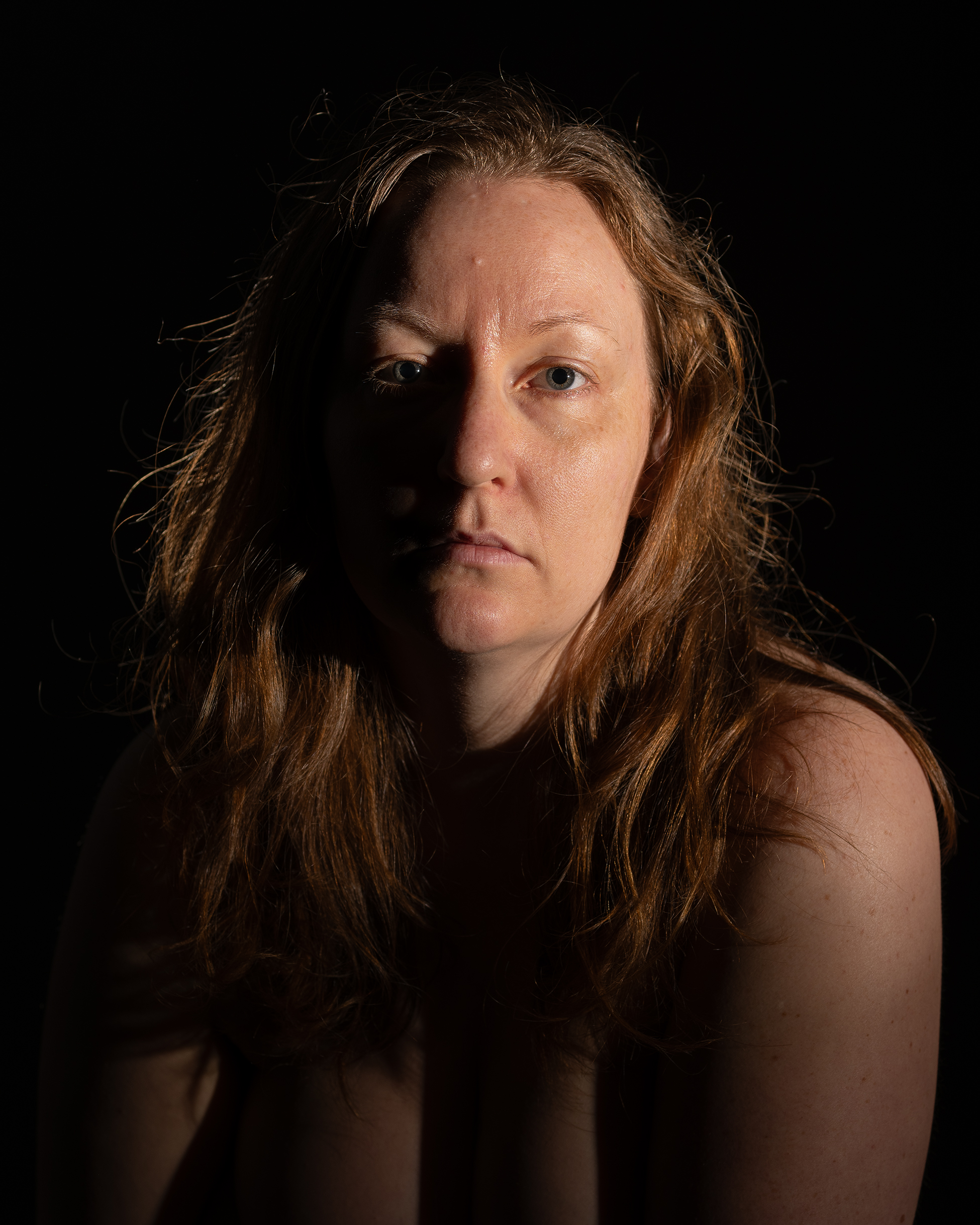
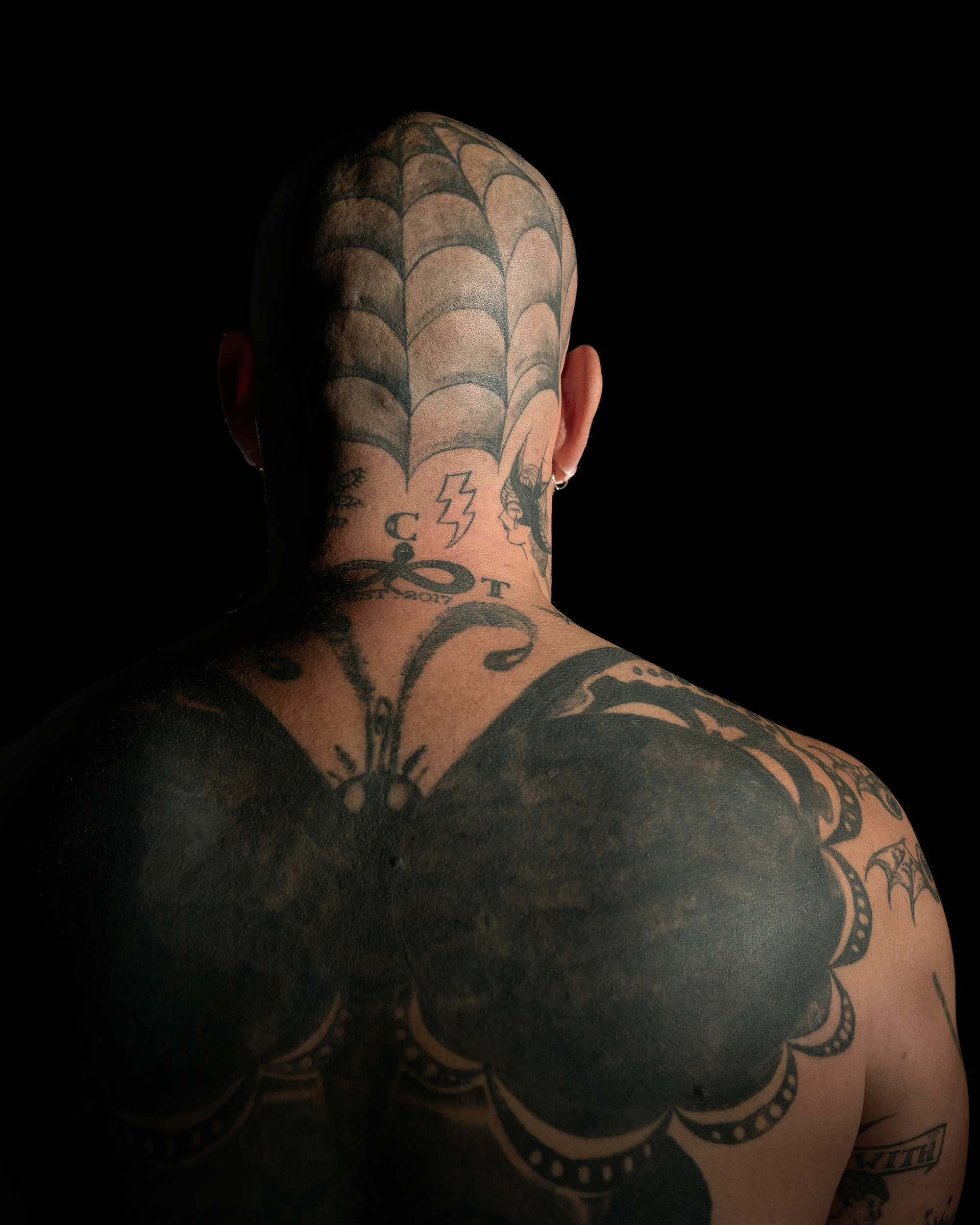
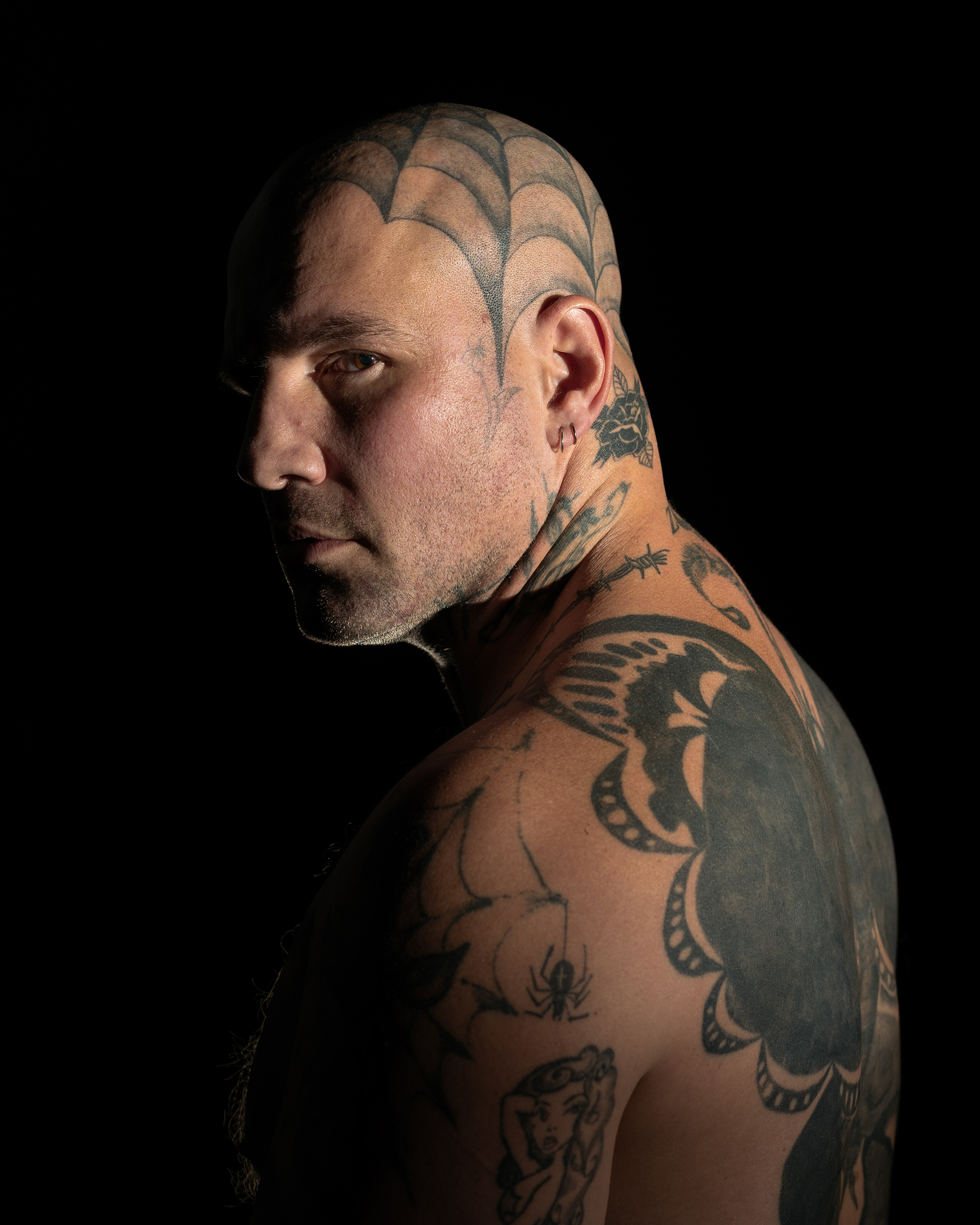
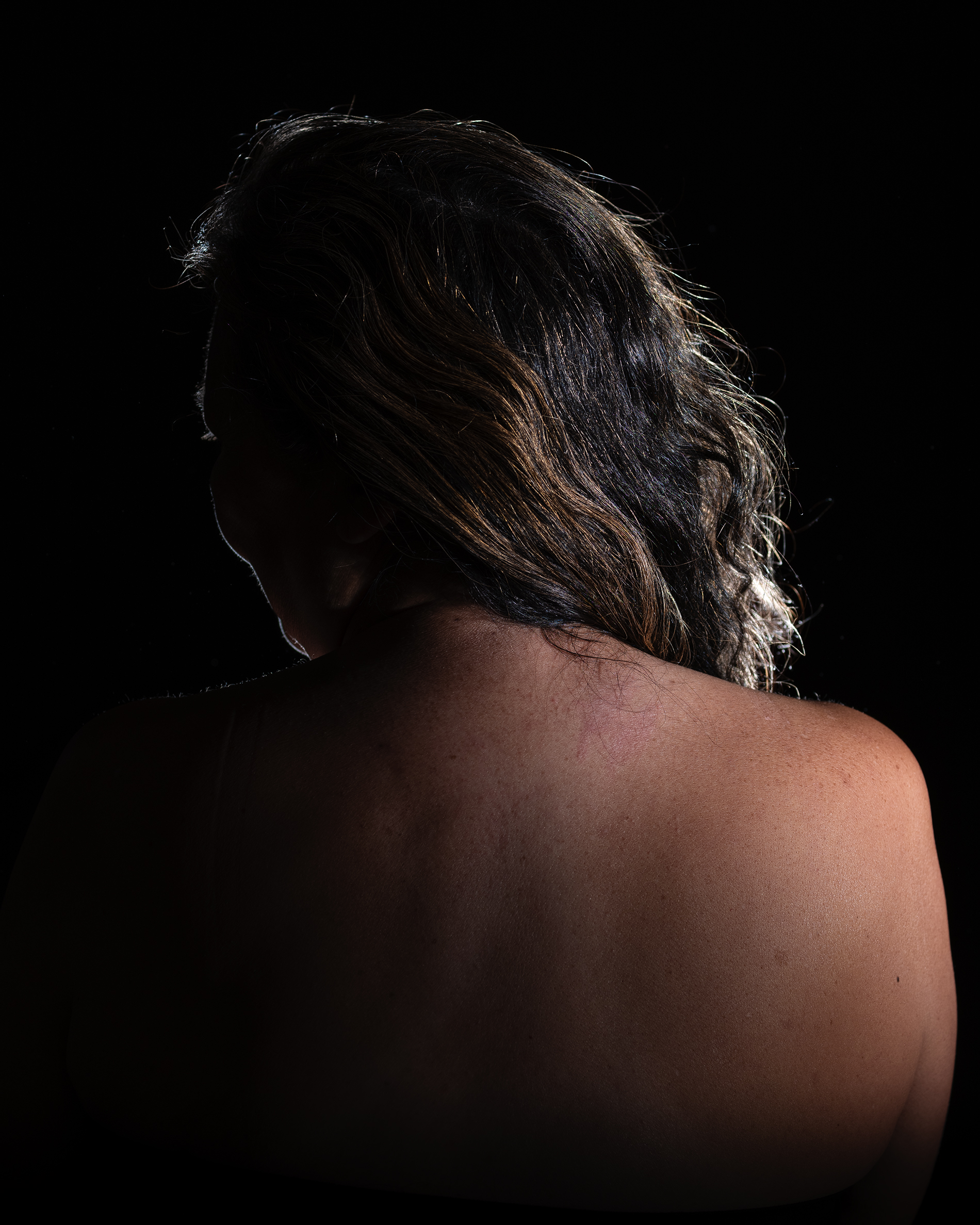
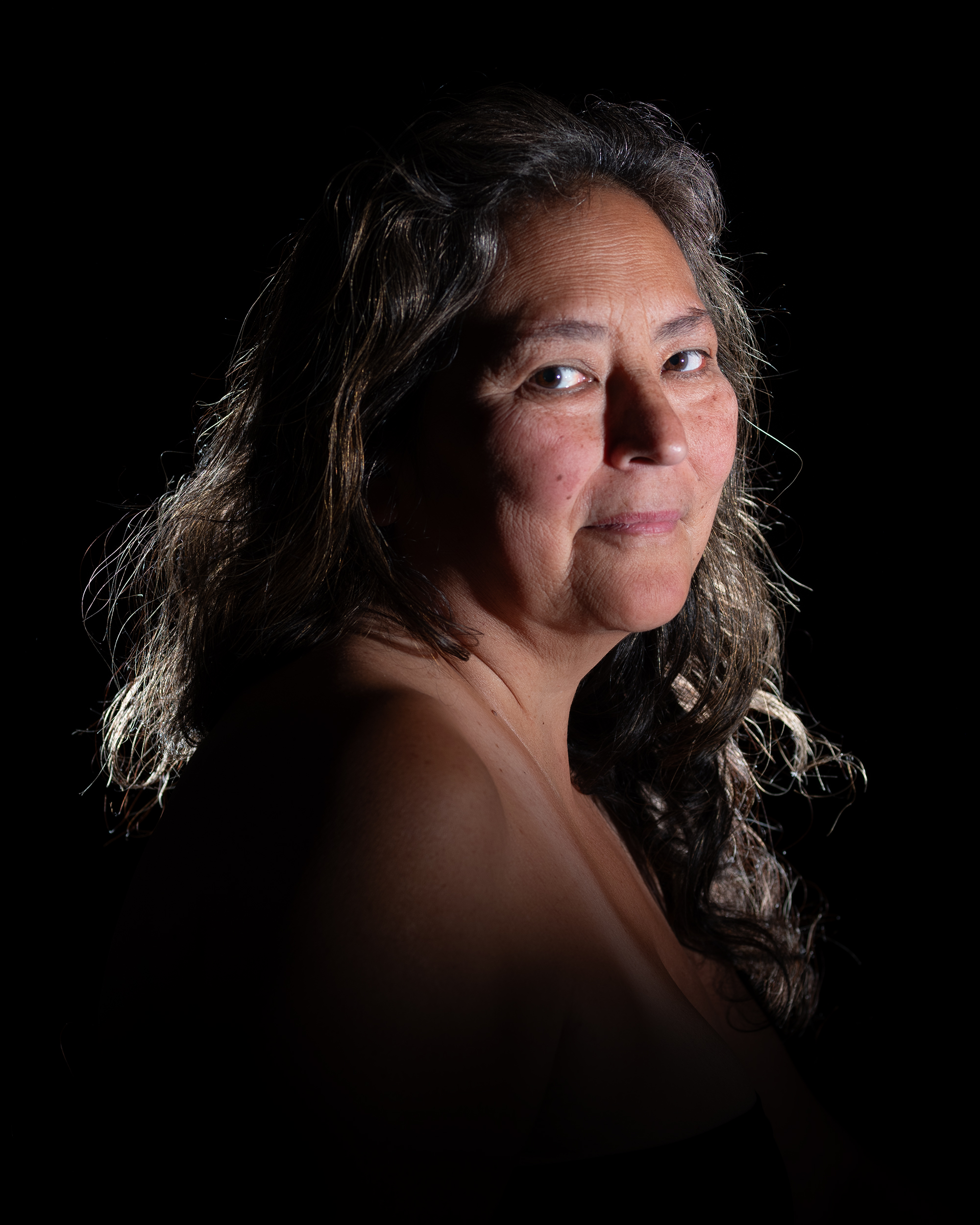
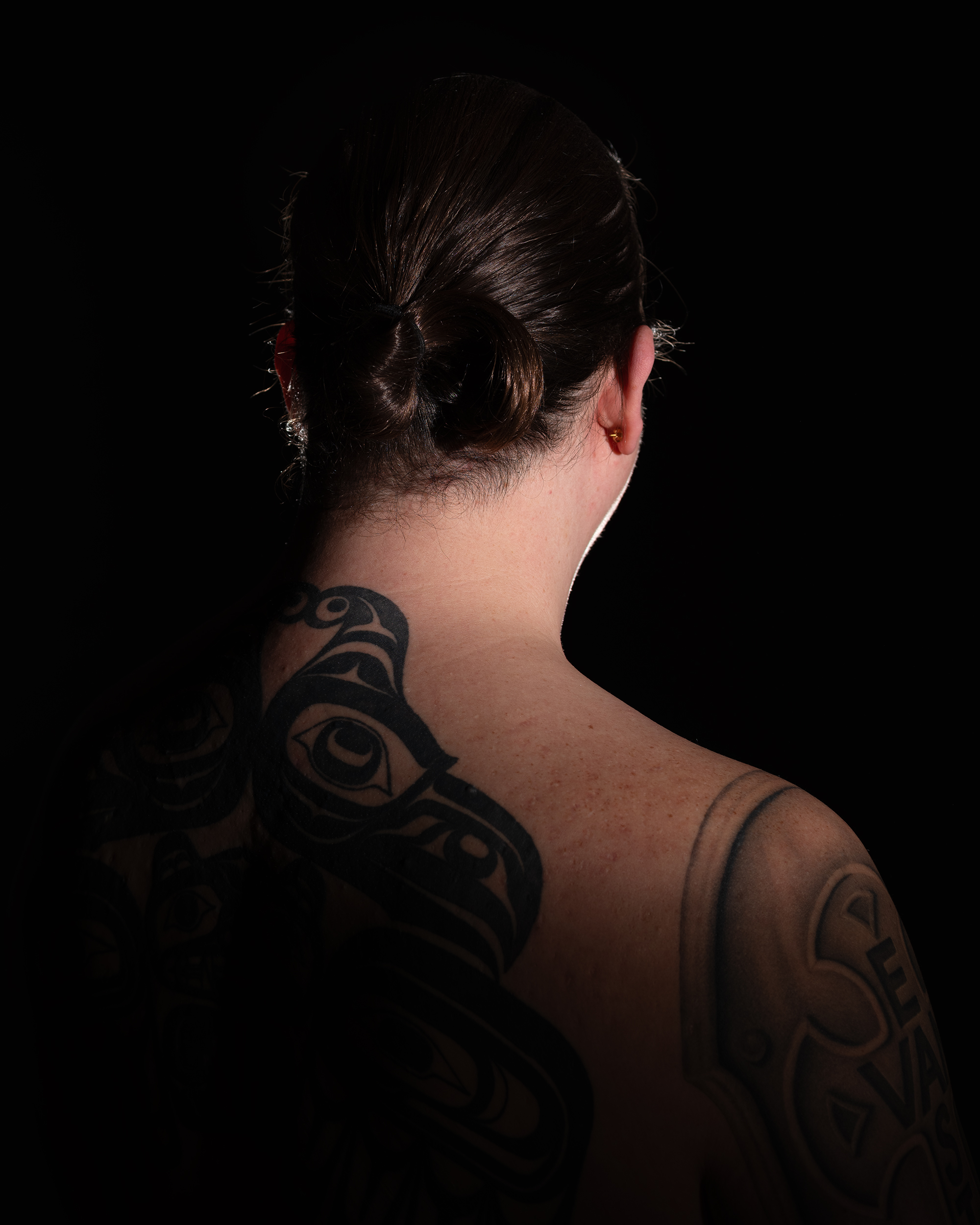
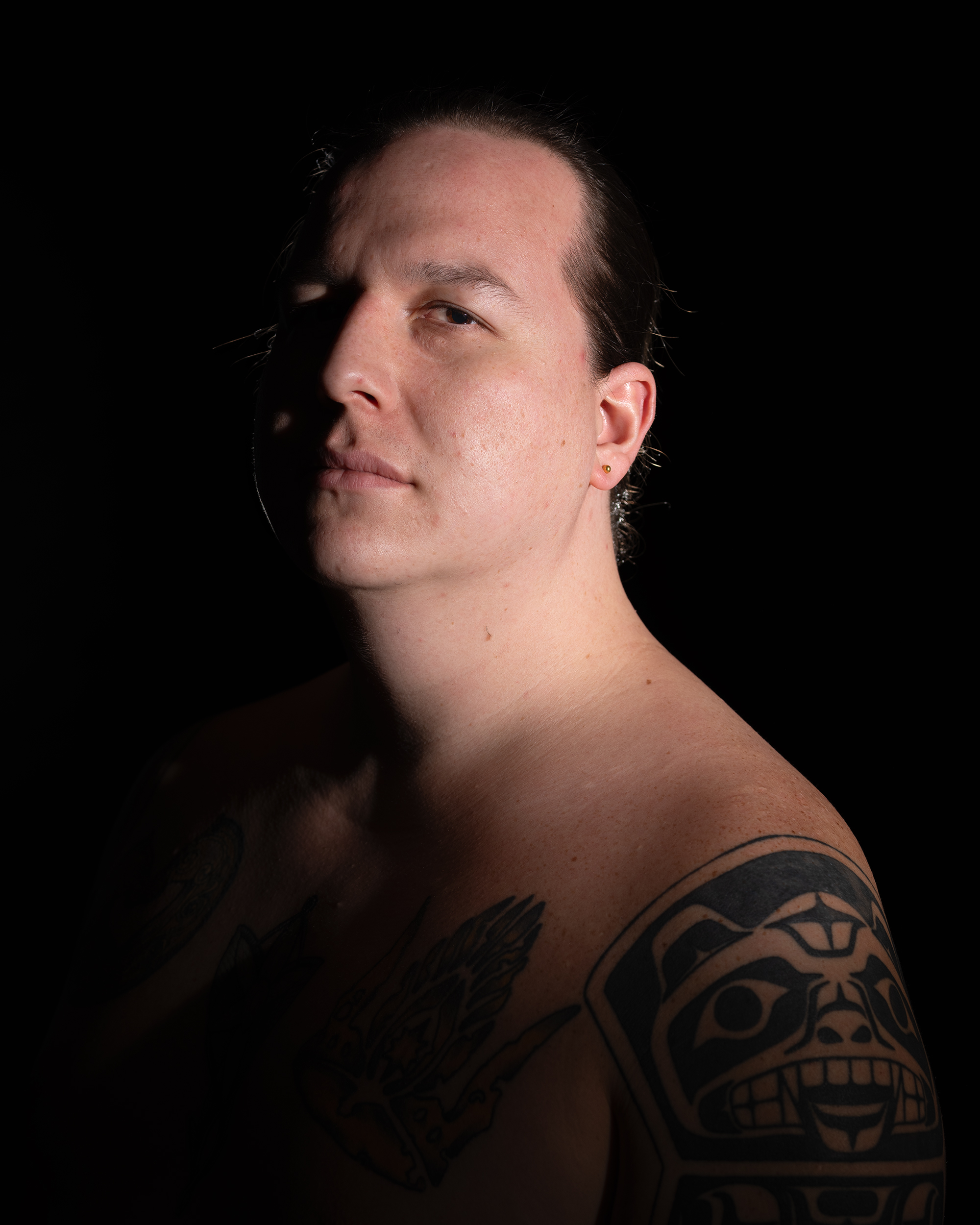
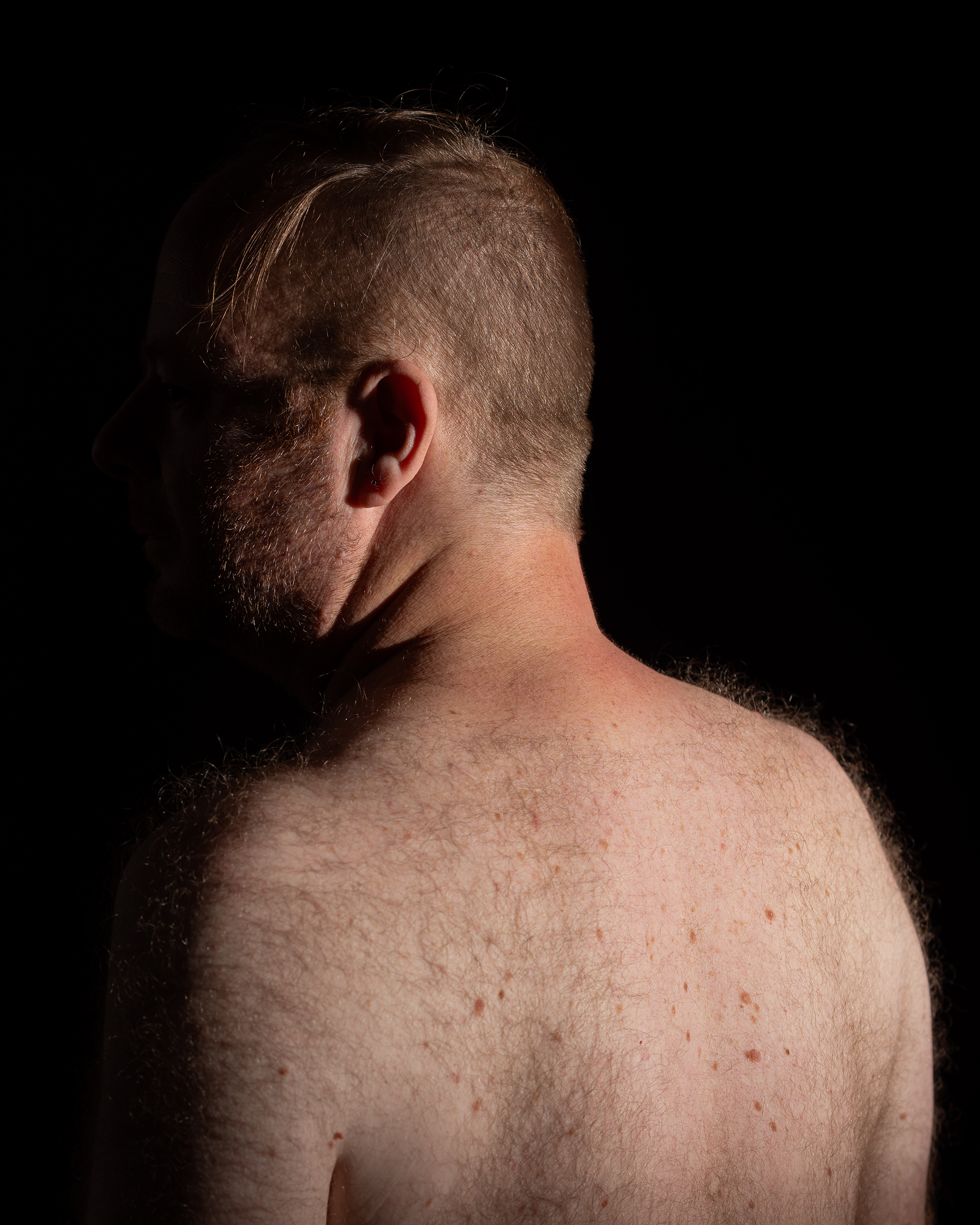
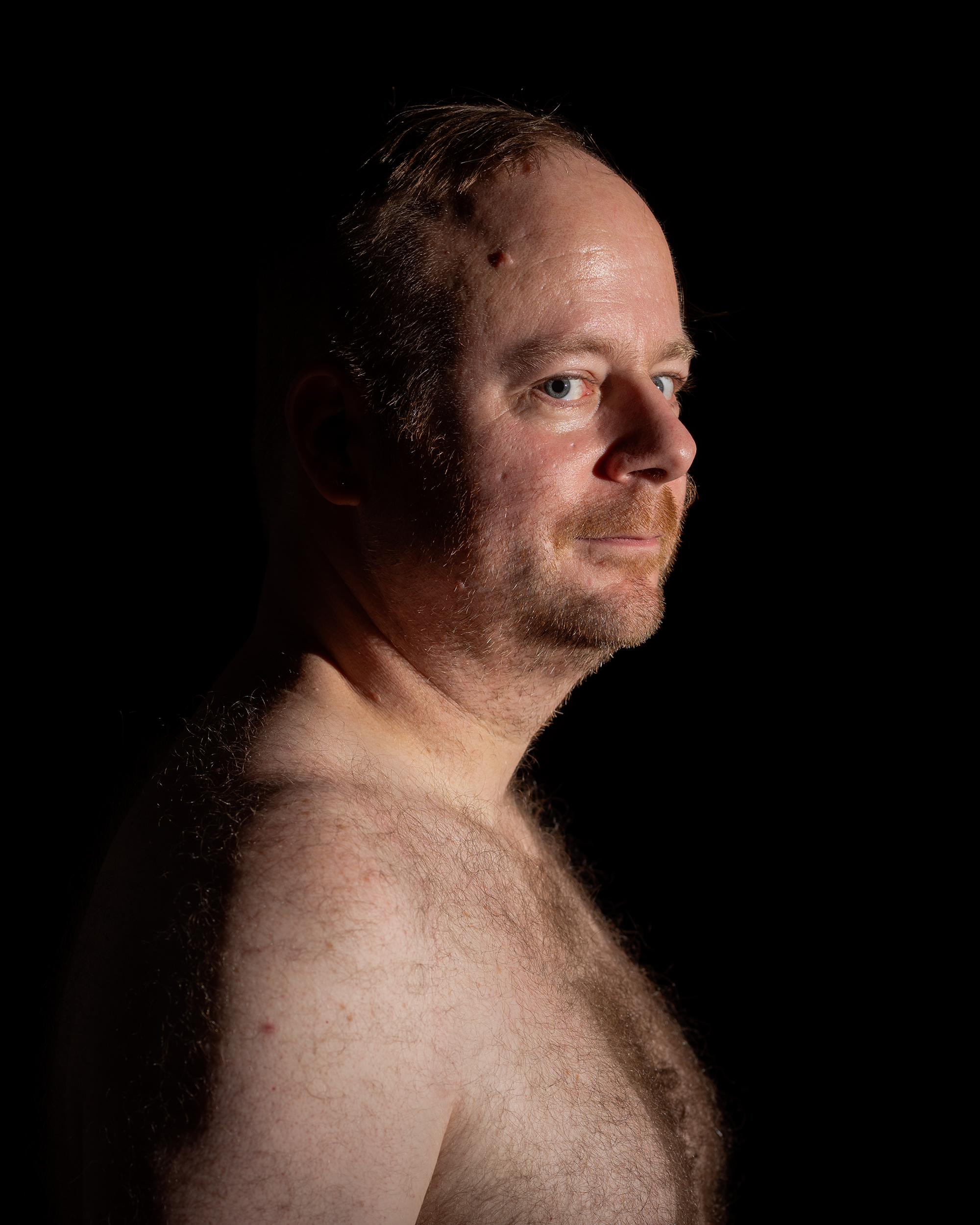
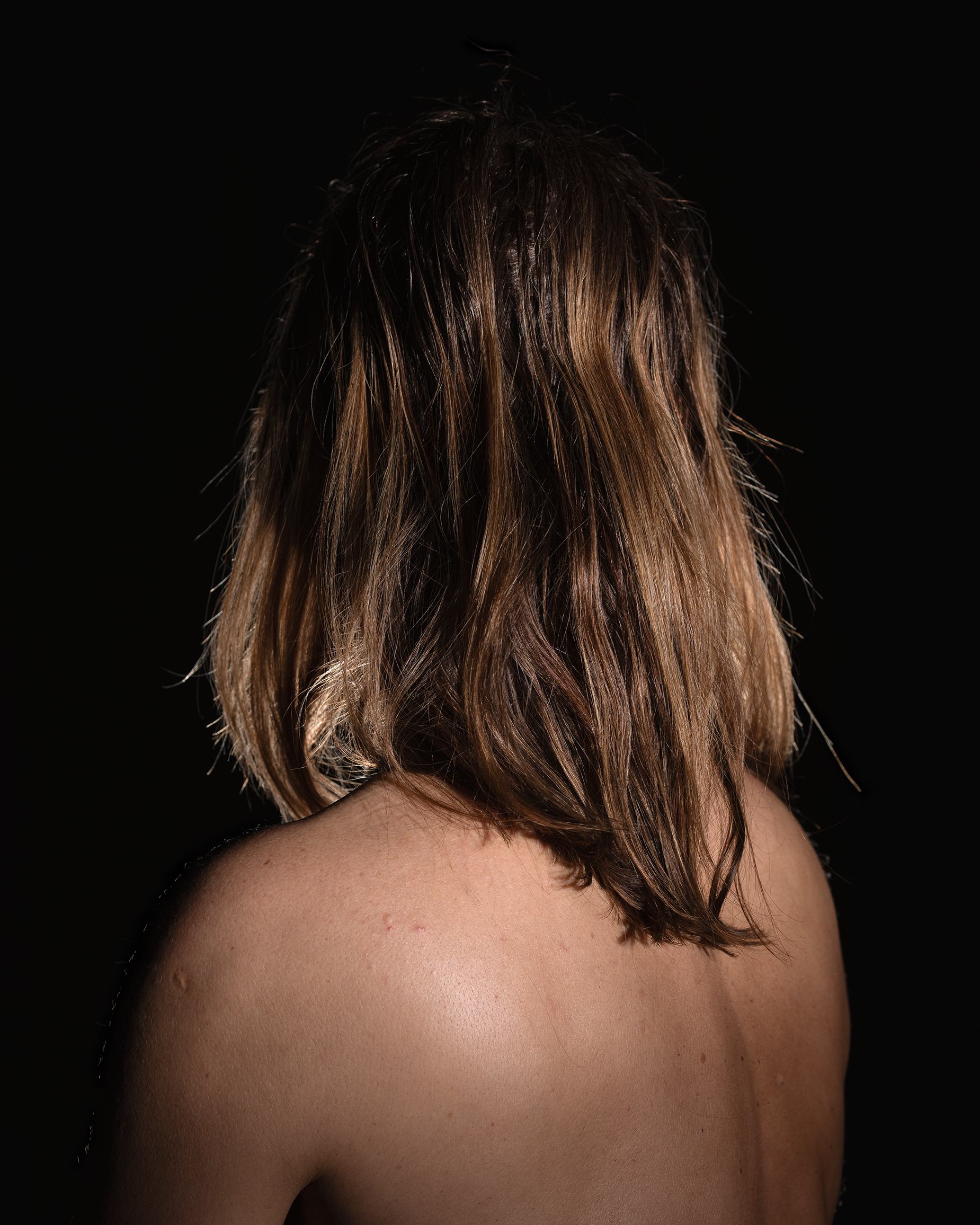
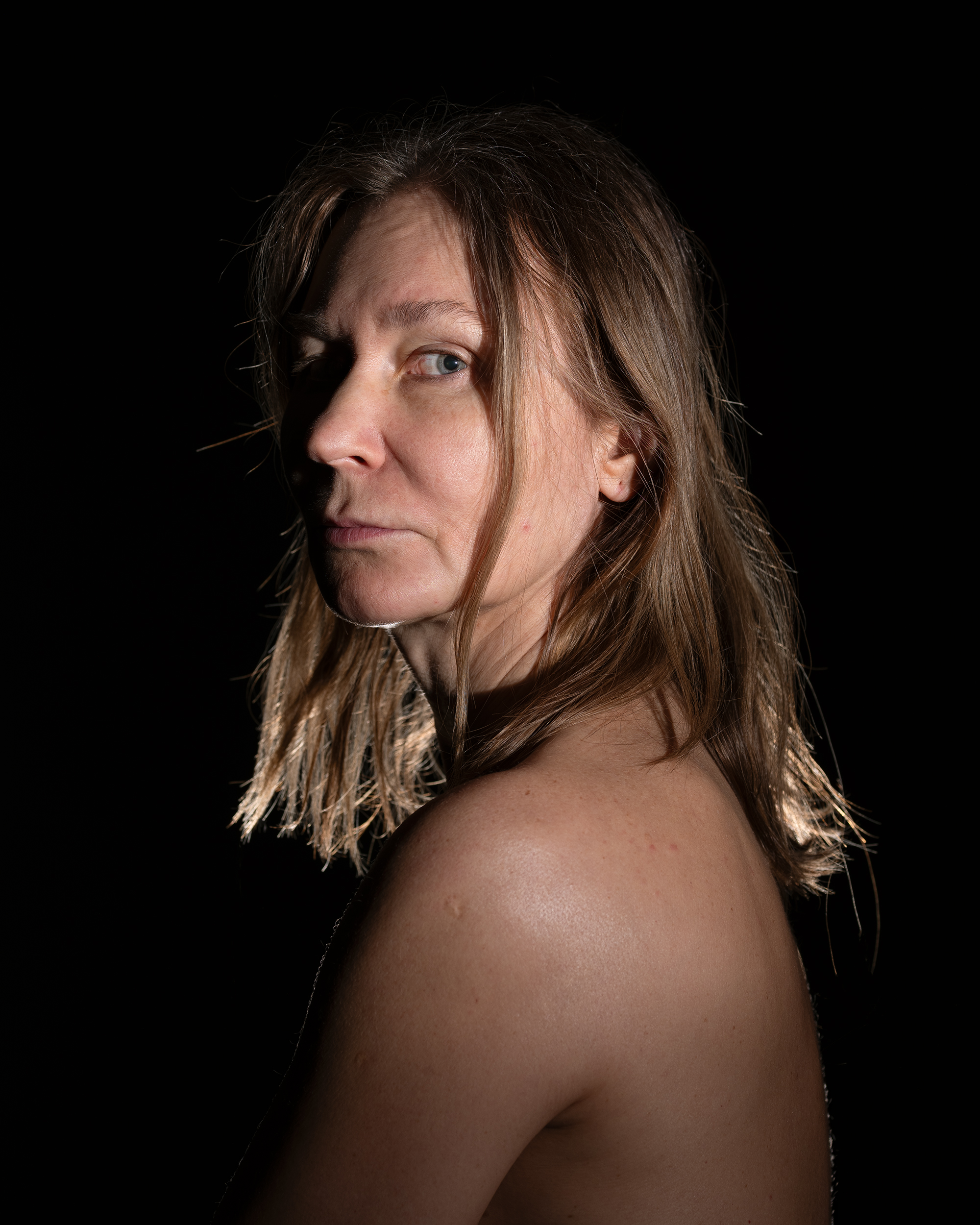
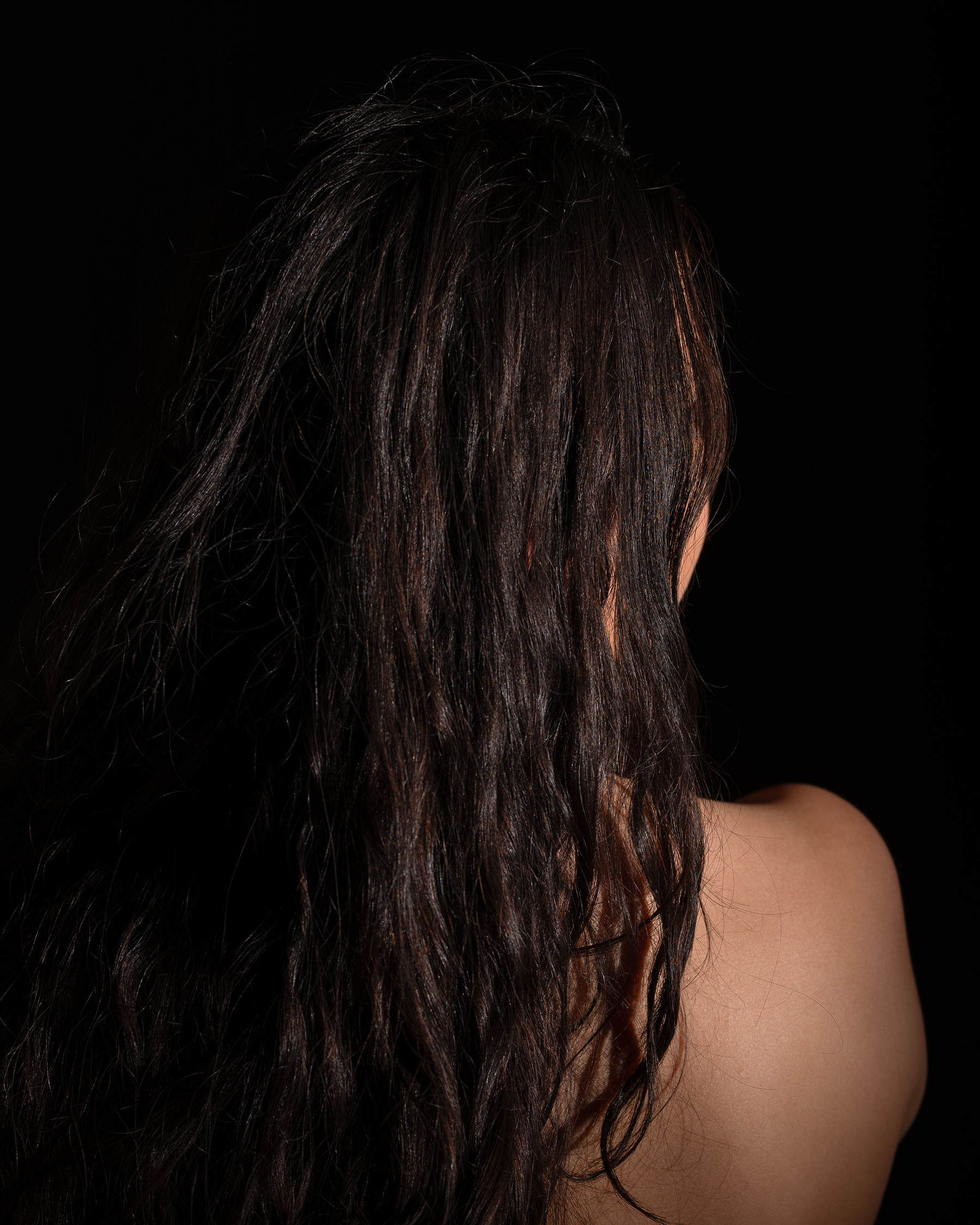
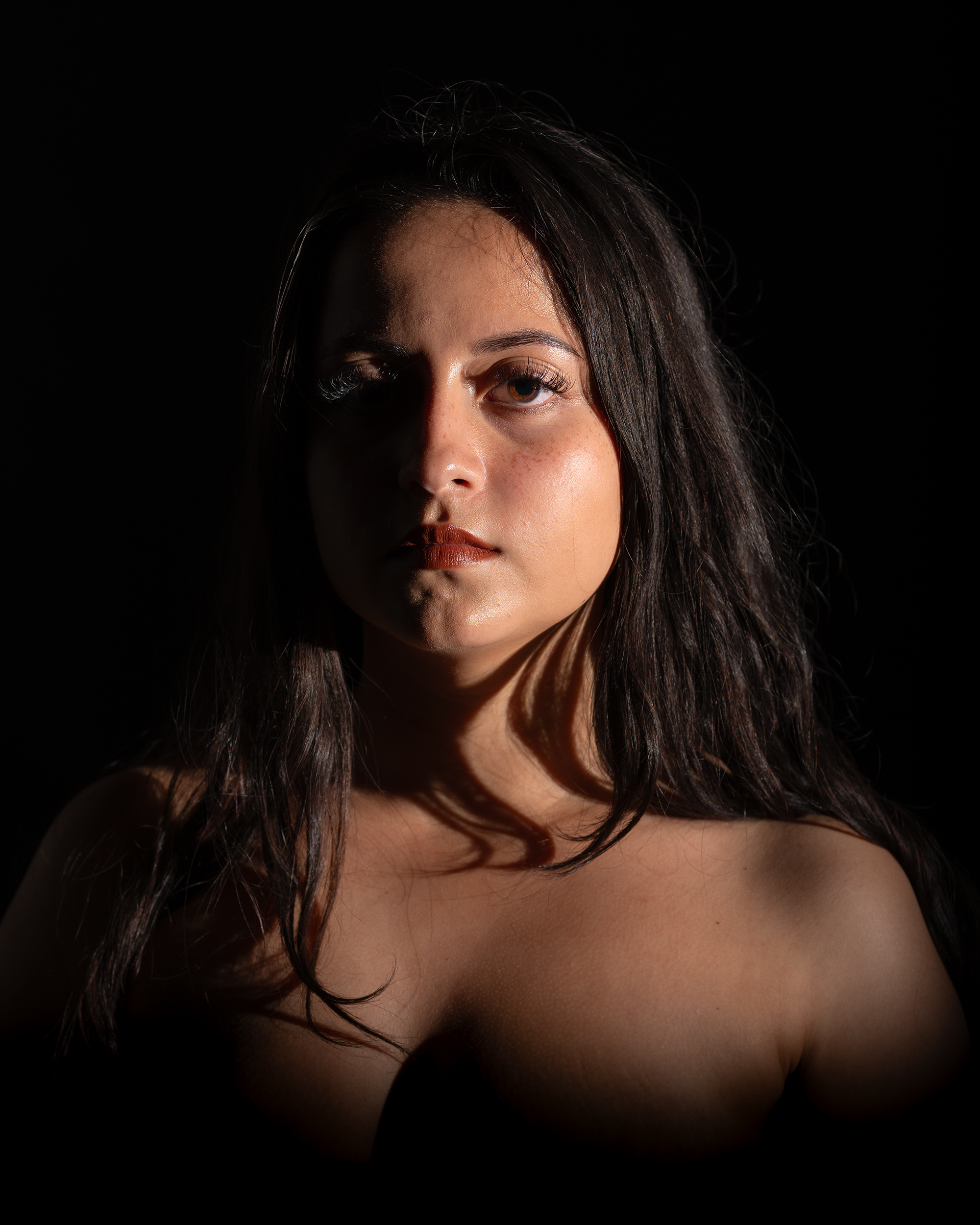
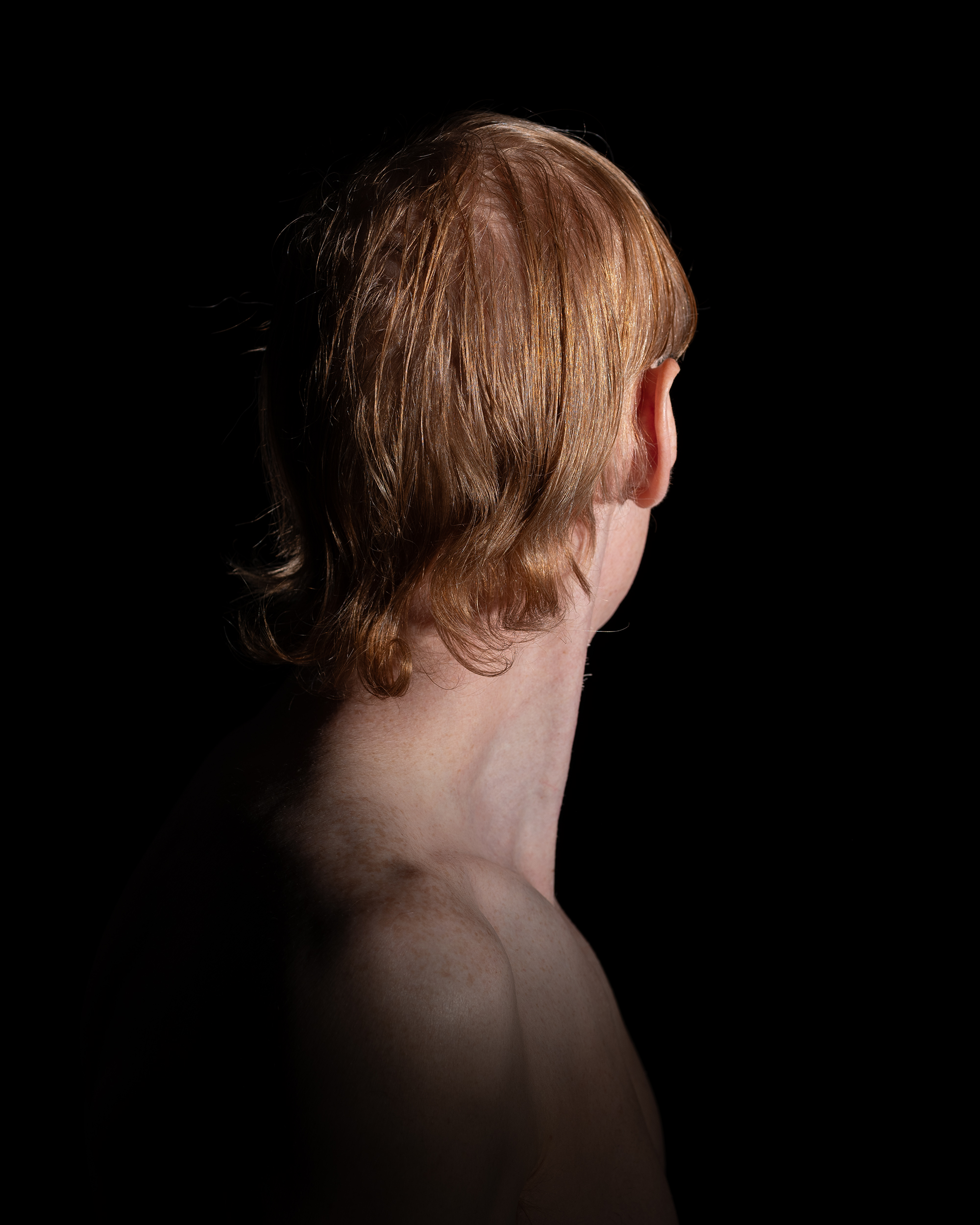
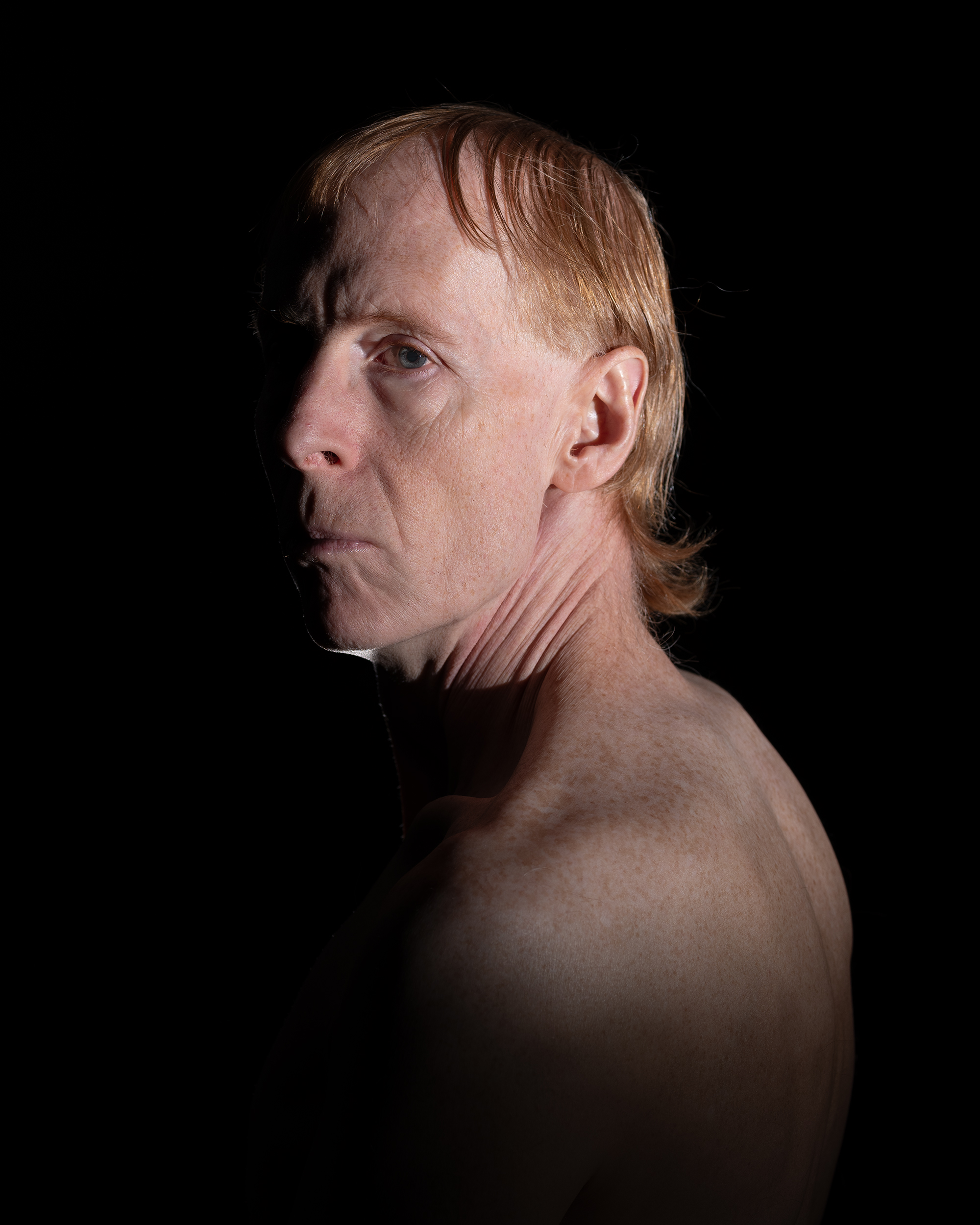

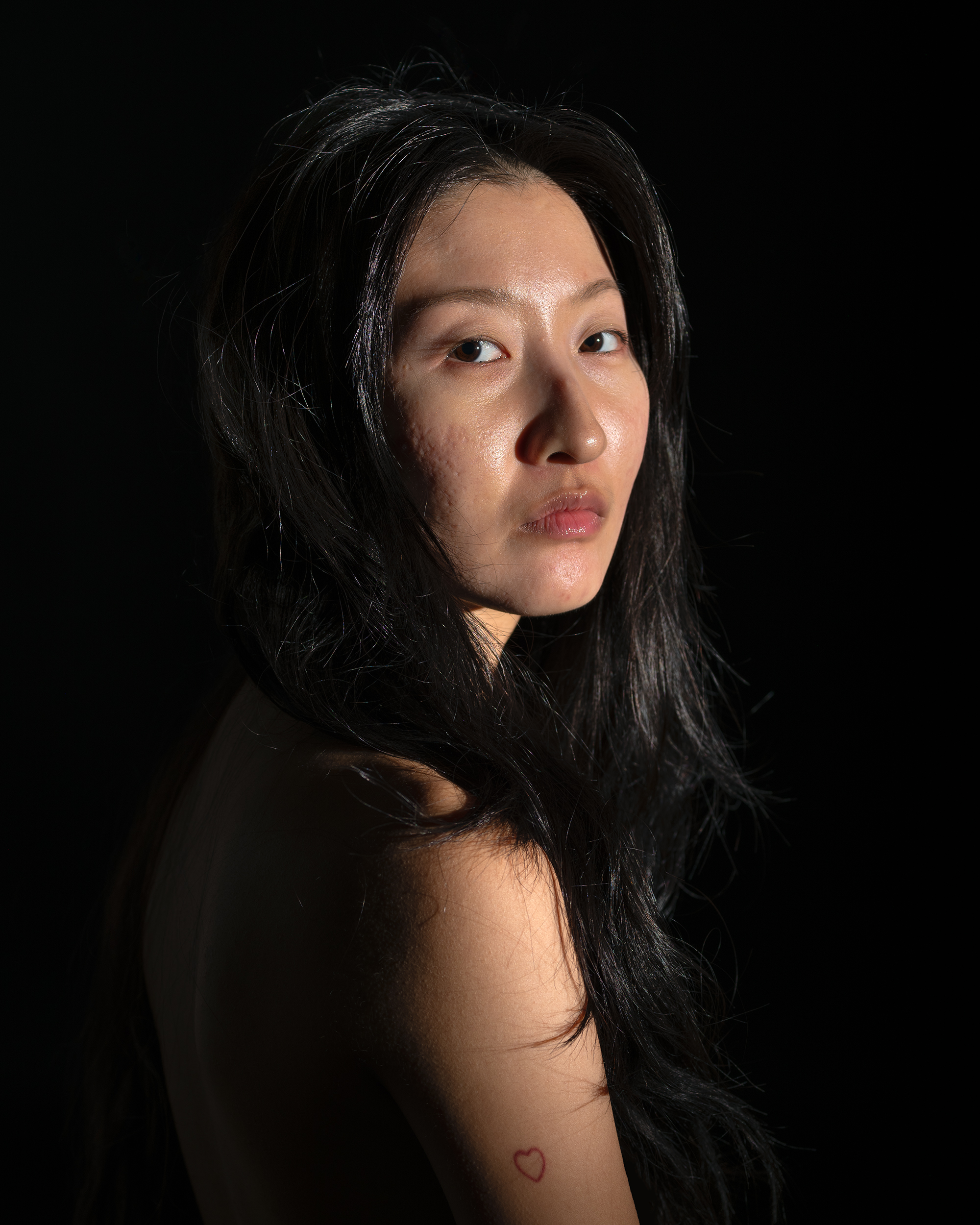
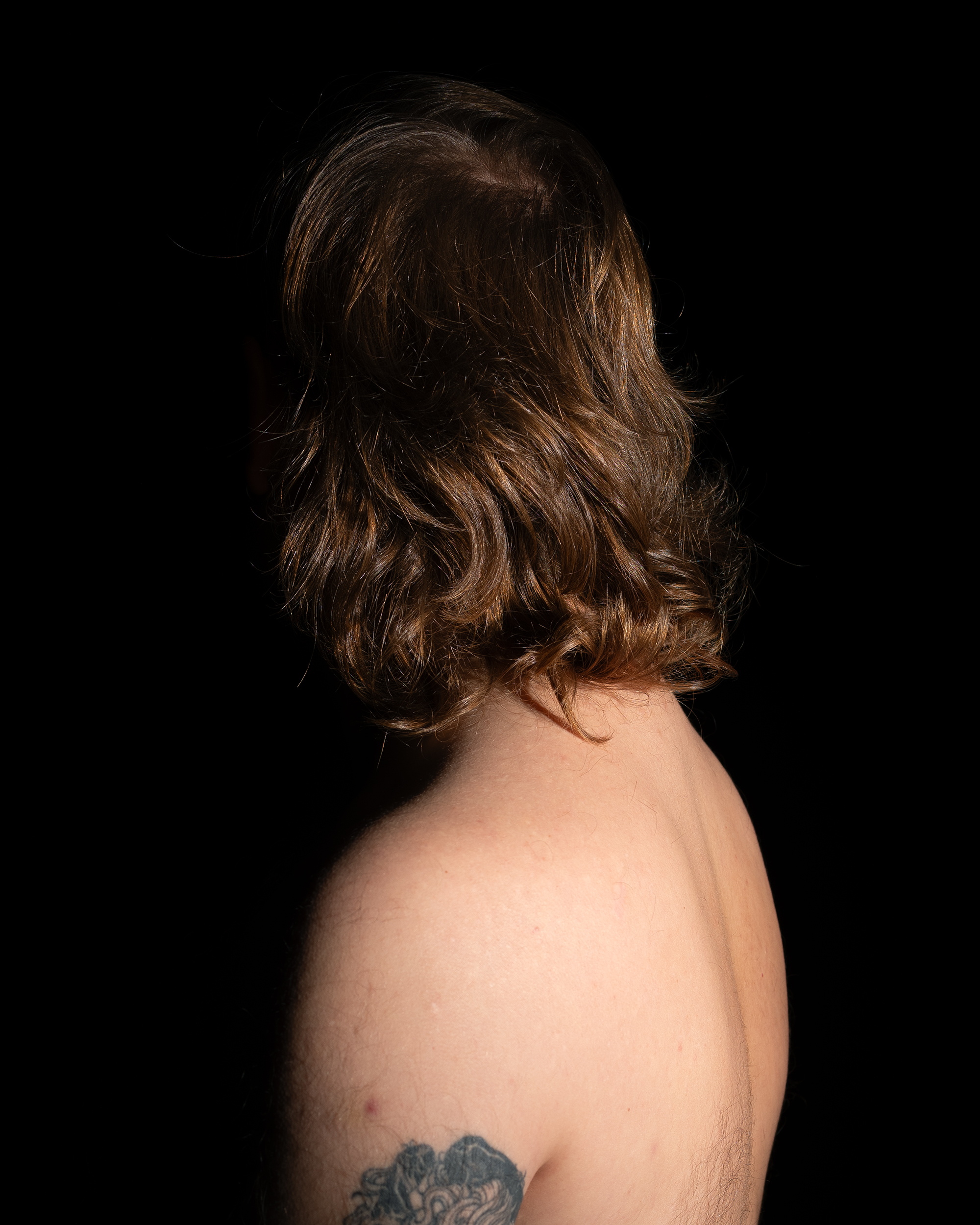
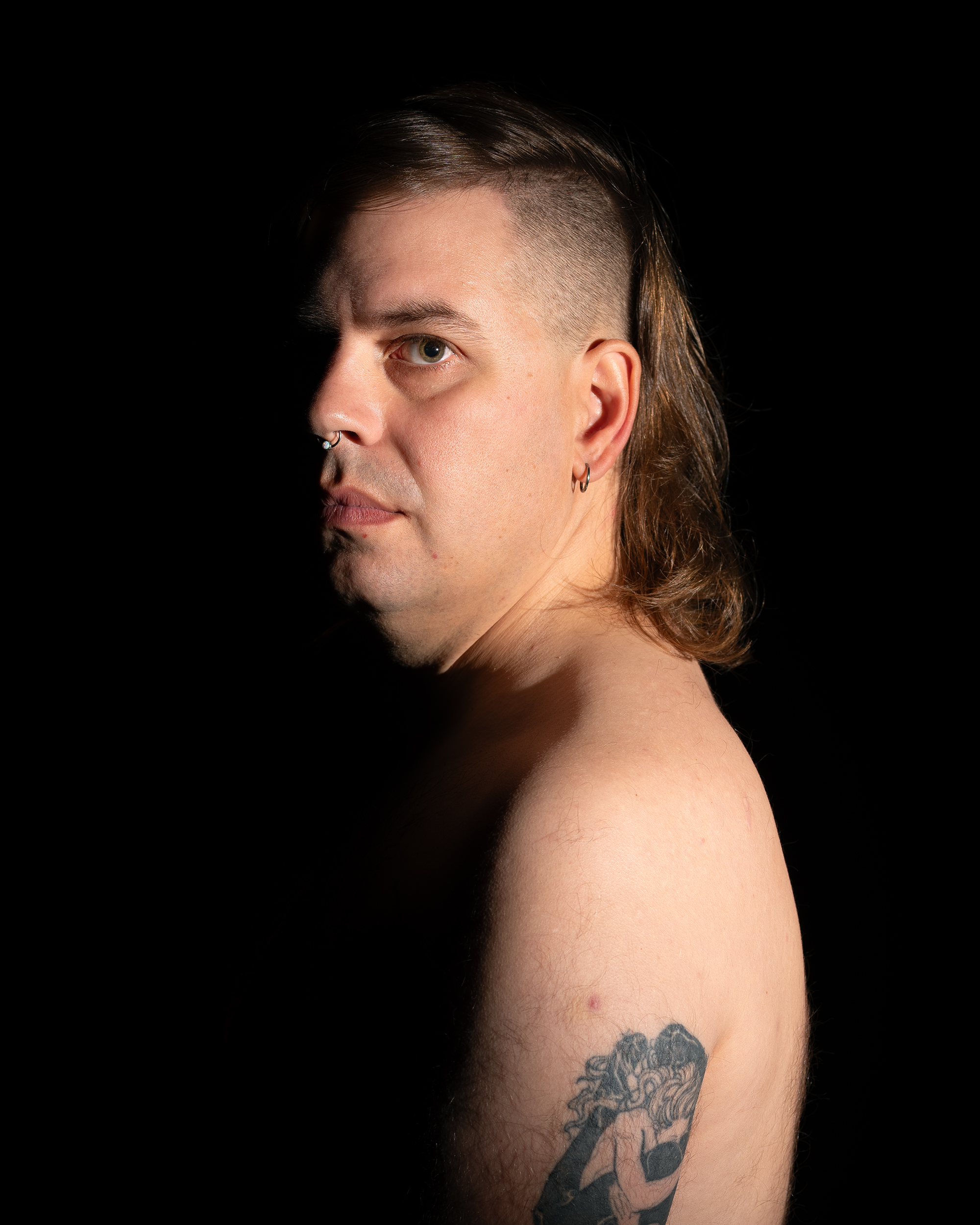

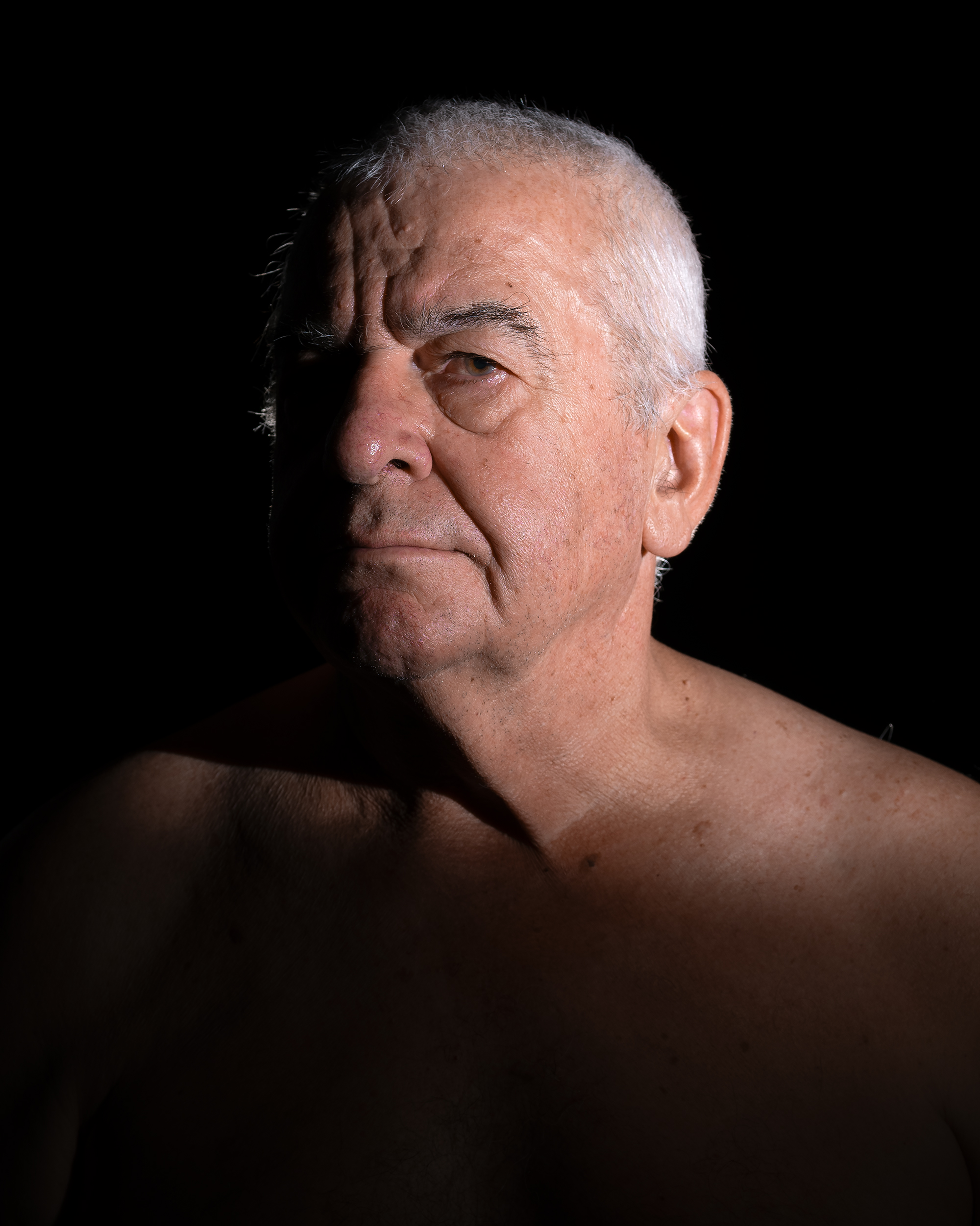
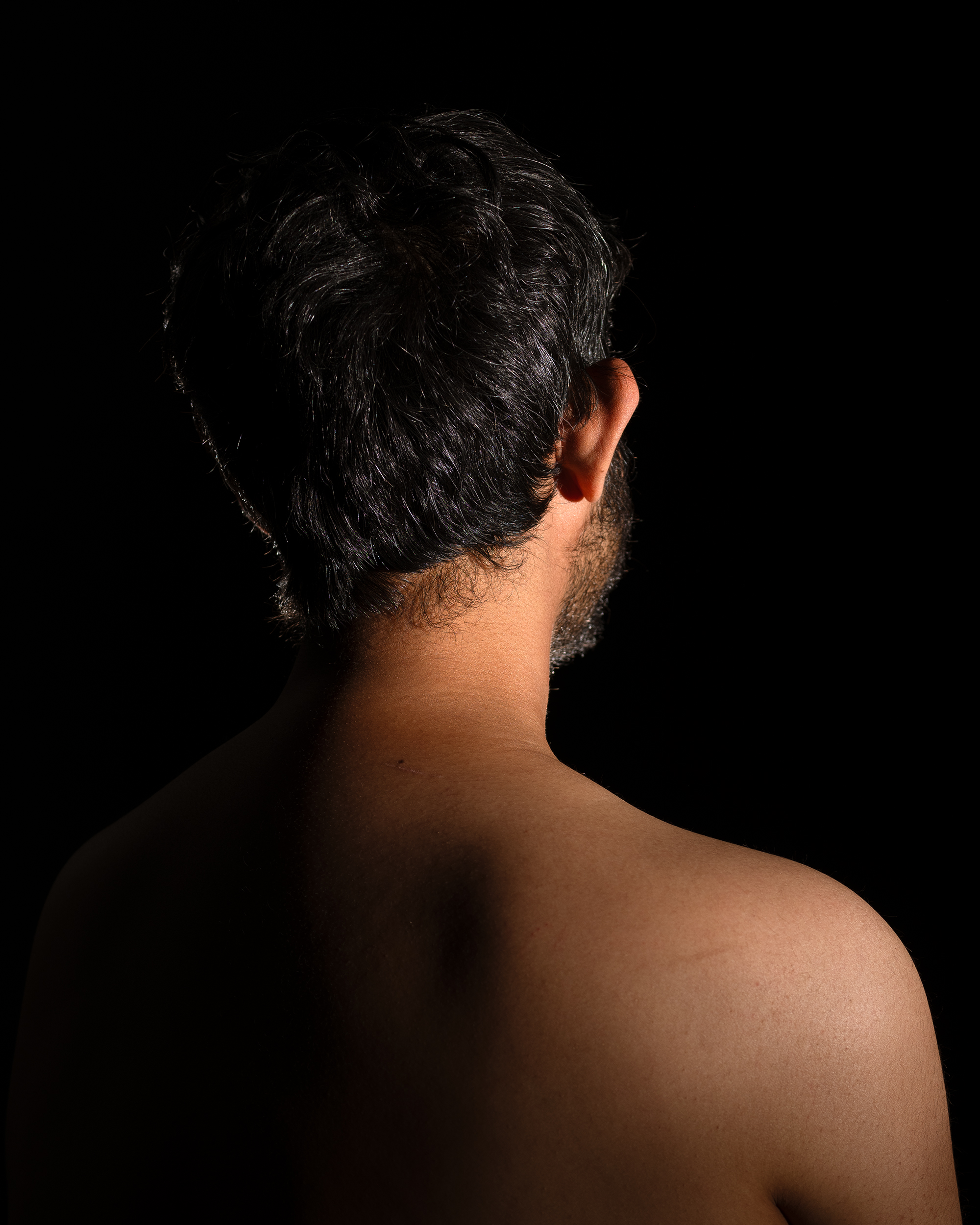
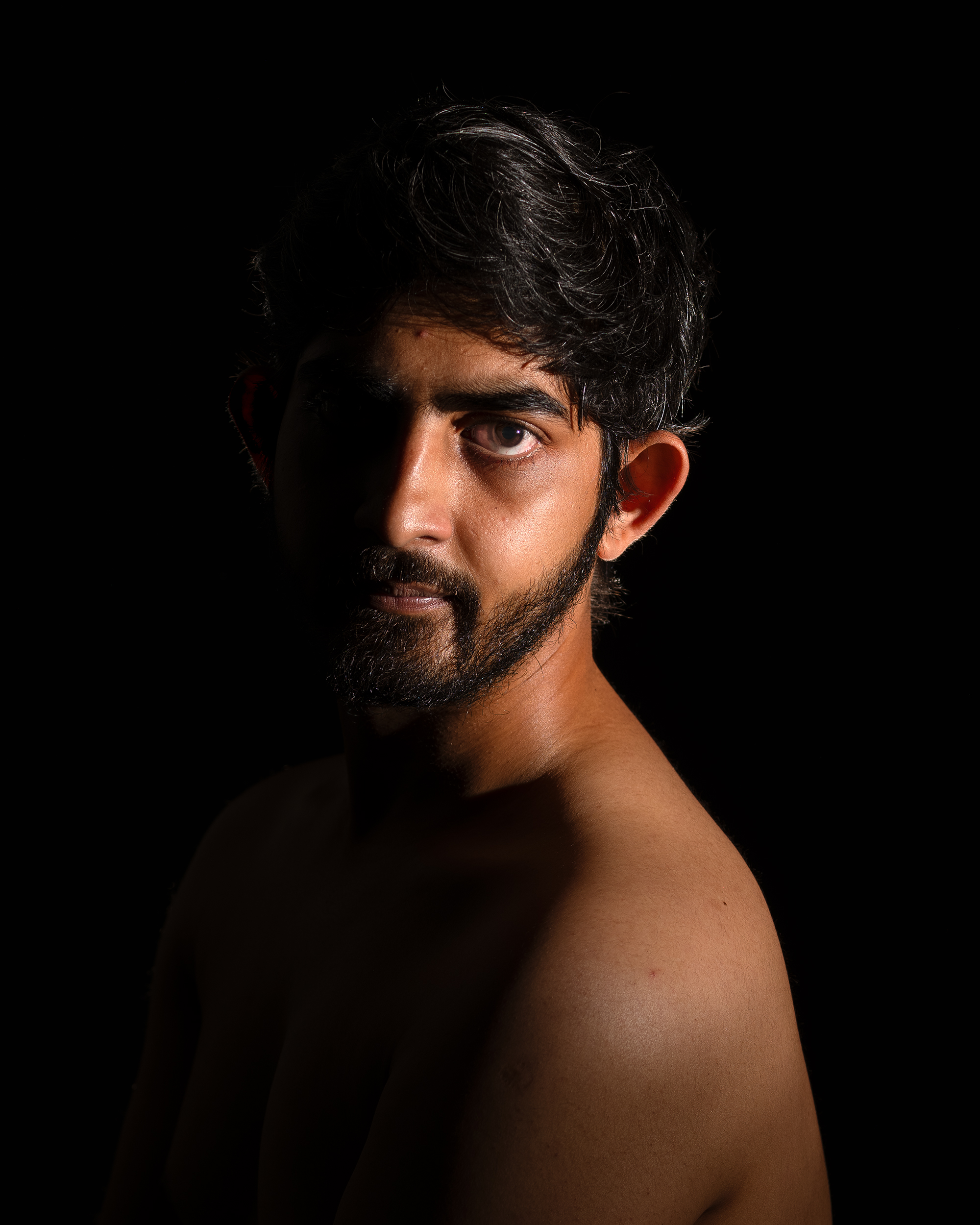
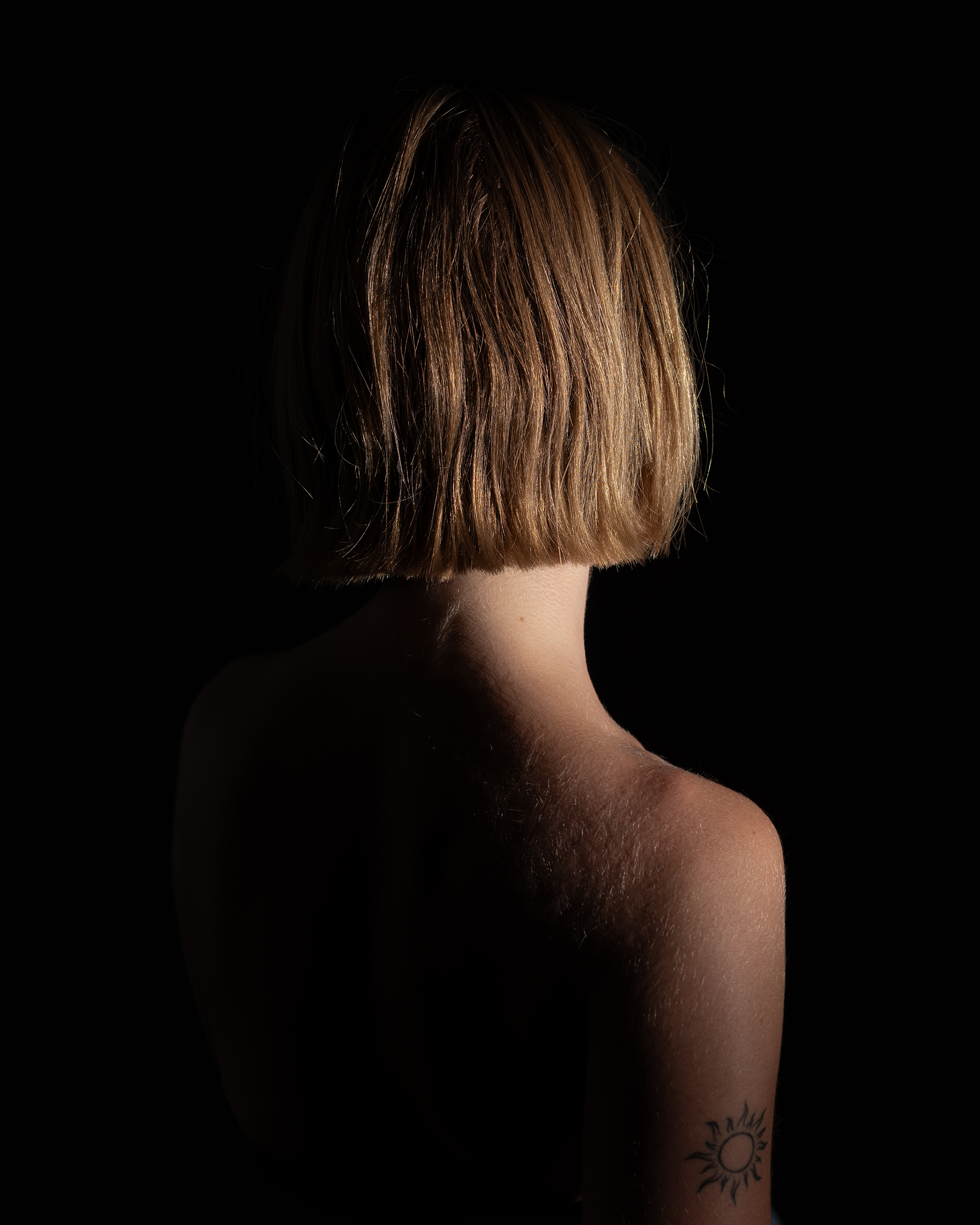
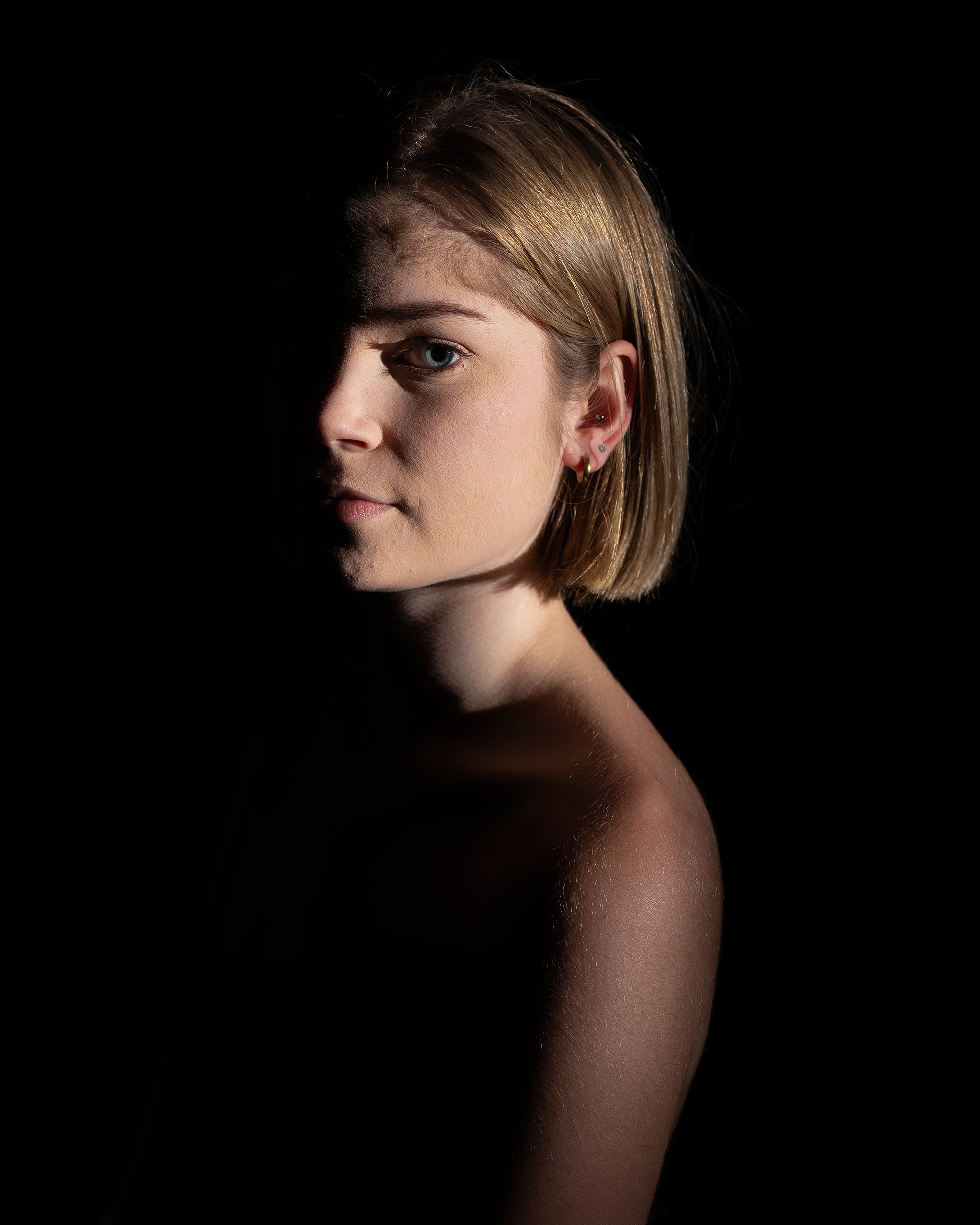
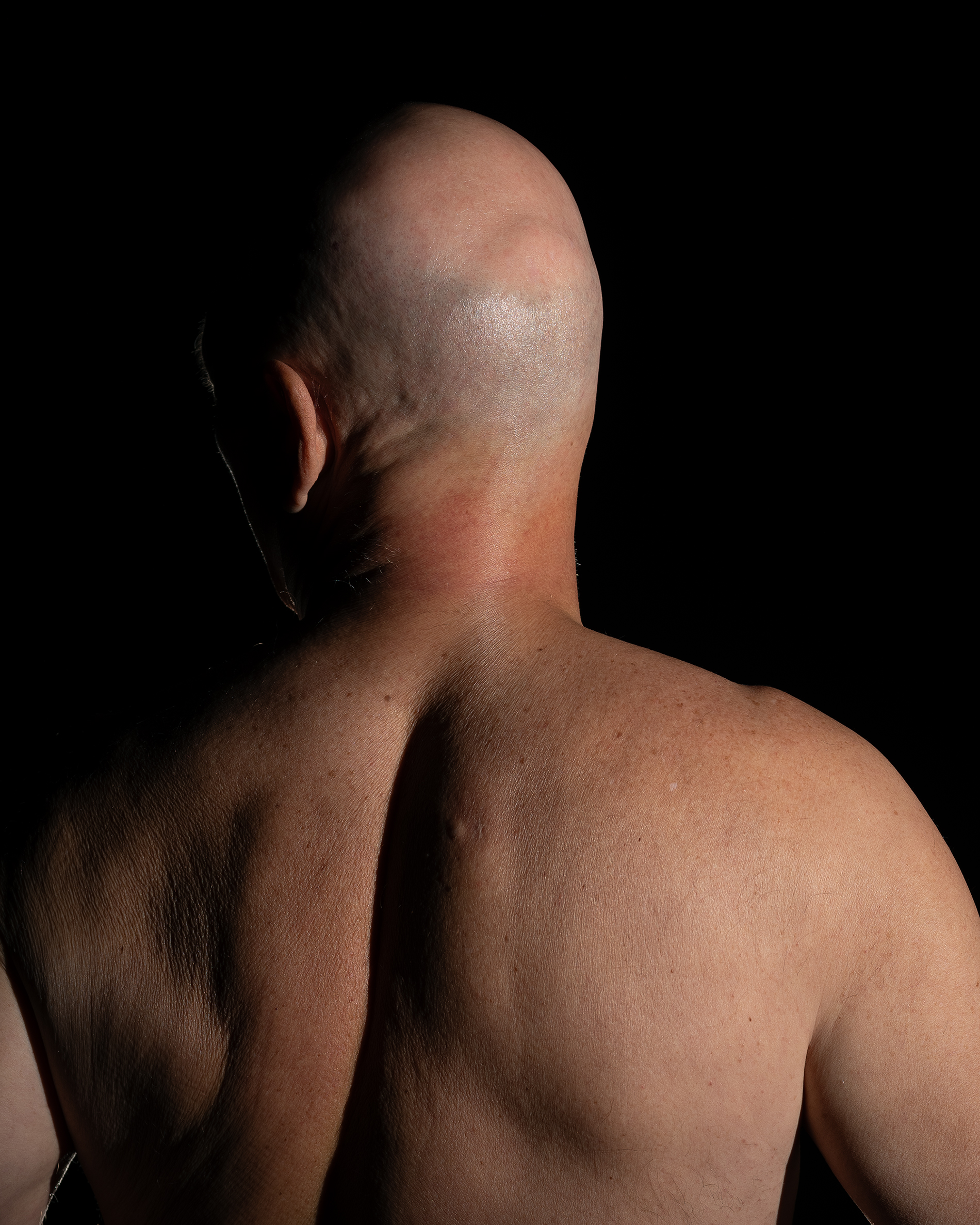
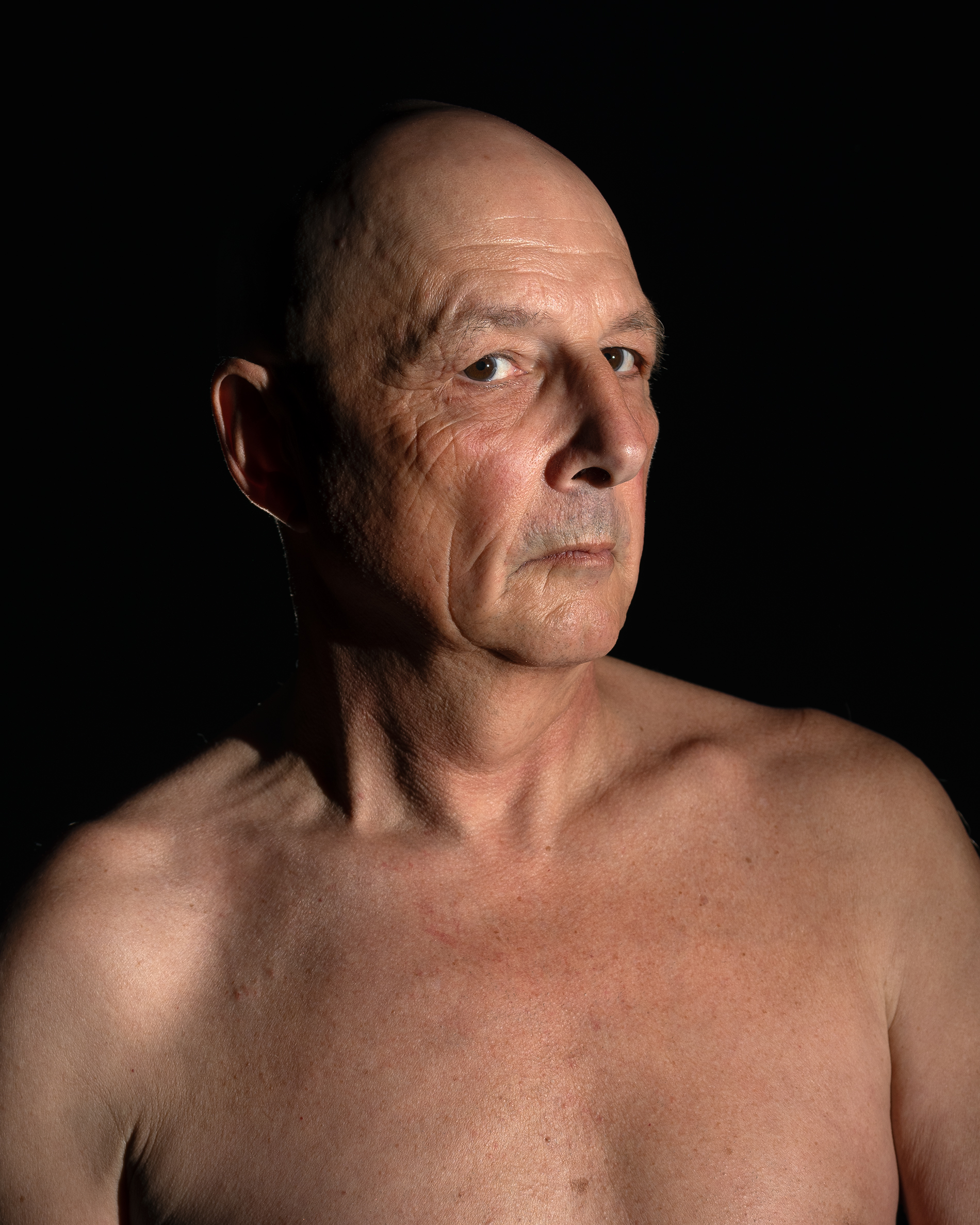
Anonymous Survey Results
An online anonymous survey was sent after each studio session. The responses from the sitters became the multi-channel audio that is read by voice actor, Tyler Roth, in the installation of Headspace.
What motivated you to come to the studio to have your portrait taken and meet with a stranger? (many people find this incredibly unreal, surprising, brave!!)
- I like to meet new people, and to be part of projects that support mental health. Most people I have been traumatized by are people who were close to me, so strangers usually don’t trigger me.
- A need to bring awareness about mental illness.
- I feel more comfortable with someone who doesn’t have preconceived ideas about me.
- It’s been a little over 2 years since I had last worked. I got into 2 major accidents. I got a concussion from the last one. I also experienced anxiety and depression. I was feeling incredibly lonely and anxious as I felt like my life wasn’t going anywhere. I constantly looked up on Craigslist for me to do things that weren’t too overwhelming for me. I saw the ad for people with anxiety and depression. I definitely fit that bill.
- I loved the concept of trying to visually capture what mental illness looks like, conveying that through the lenses of the artist.
- The “dark portrait” theme intrigued me – in the same way as sad music and tragic literature. I am also interested in how an artist may see me and render my image. I used to be exceptionally shy about such things, but challenged myself to be exposed, so now it is sometimes compelling.
- I am a fairly lonely type, so I like to find things to get me out of the house. And this sounded like a very interesting experience.
What was your experience like in the studio having your portrait taken?
- It was strange, but enjoyable. Something about someone wanting to focus on me for that length of time is kind of healing.
- It helped me see my body in another view.
- I felt more confident looking away from the camera.
- I’ve never been to a studio to have my portrait taken so this was my first and only time. It wasn’t as glamorous nor was it as sketchy as I thought it would be. It was a great experience getting to know Andrea. It was also a relief to know that she wasn’t a psychopath, she could have easily been.
- Honestly invigorating and exciting!
- Calm, almost meditative – large dark quiet space, Andrea (the photographer) giving direction, occasionally visible, and then its done.
- It was really interesting. I did like the atmosphere of a professional photographer taking the shots.
how do you feel about photos of yourself?
- I love the results!
- I don’t usually like looking at pictures of myself, but as others like to sometimes I try to be reasonable about it. Not having a picture of my face was easier.
- They feel raw but also hidden through the shadows.
- Fascinated – can be so different depending on mood and light and the photographer, sometimes i like how i look, sometimes I don’t (but if the photo is compelling that can be OK).
- These photos were a little different because of the lighting. So liked the result.
- I feel great.
- I have mixed feelings about photos of myself, sometimes I don’t like them at all.
What kind of community are you a part of?
- I have. a church family, a biological family, and people I have adopted into my family because I felt called to.
- Acroyoga.
- I am part of the community that is best described as nerds & geeks.
- Not exactly sure how to answer this question but I am thankful for the community of Christian friends that have supported and loved me and are not afraid to be real with me.
- I don’t feel that I really belong to any community in Vancouver.
- I do not identify strongly with any one – I am more of a loner drifting in and out of different communities, maintaining varying relationships with groups of artists, high tech workers, and my neighbourhood.
- I would say I belong to society as a whole. I don’t identify as any particular group.
How would you describe your relationship with mental health? Do you have a diagnosis? Does it matter?
- My relationship with my mental health varies between acceptance and resentment, depending on that day’s circumstances. I have a bipolar 2 diagnosis, and am on disability for it.
- I’m diagnosed as severe chronic depression.
- Although I don’t have a diagnosis I am most definitely within the parameters of a spectrum.
- I have anxiety and depression. My mom has bipolar disorder. My mom’s mom killed herself. It does matter.
- Lifelong and demanding. Yes I have a diagnosis. No I don’t think it does. It’s been challenging to find the right doctor, in my experience I have been assigned different diagnoses. It’s frustrating to navigate through what works and what doesn’t, financially, with medications, compatibility, etc when you feel so vulnerable already.
- Reasonable. No significant issues, tending to be very introverted, sometimes lonely, sometimes fully satisfied with my own company. No diagnosis though one psychologist informally (based on limited social contact), described my introversion as near pathological, which was sort of unprofessional when you think of it, though I was shyer and more introverted in those days.
- My mental health is good overall, but I feel a loneliness as I grow older.
What does your support system look like, or do you have people you talk to about your mental health?
- I provide support for others, but I don’t allow many people to support me. It’s a trauma/trust thing.
- I’m seeing a psychiatrist regularly, I’m practicing hot yoga and acroyoga.
- I talk to friends about my issues with mental health and they usually respond. “Your crazy”.
- I talk to my mom. I also go to my counselor when things are pretty intense. I think overall, I try to be open about my mental health. I tell people I have medications and for anyone who’s willing to listen, I tell them what my family has gone through because of it. Not everyone will understand but I think it’s important to make people aware.
- My friends and partner, not my parents or family.
- No, none needed, balanced enough on my own.
- Loneliness doesn’t have many supports I don’t think.
How important is creativity in your life? Do you have a creative outlet? What kinds of things do you do?
- I’ve been blessed with the ability to play, sing, and compose music. I also write devotionals, and enjoy the creative endevours of others. Just watching art happen can be very soothing.
- Very important.
- Dancing is my most important creative outlet.
- I recently started sewing and I feel like that has been somewhat therapeutic for me. As someone who was born and raised in a third-world country and being a first-generation immigrant here in Canada, I feel like I have no time for ‘creativity’ as it is relatively an expensive thing to engage in.
- Quite important. But struggling with my mental health makes it difficult to pursue that sometimes. I like to paint. I like fashion also so I like to style fits.
- Very important. Essential. My practices include photography, making useful things from scrap, acting, and art modelling.
- Very important. I have always been interested in and have tried my hand at visual arts and music.
Do you “fit in” or how have you tried to fit in?
- No. I can fake it though. I listen well, am supportive, helpful, and can look pretty normal. Mostly I spend time recuperating alone after pretending to be normal for more than a couple of hours.
- I’ve tried but never succeeded to fit in.
- I usually find the least popular persons in the group and fit in with them.
- As a first-generation immigrant, I’ve tried to adopt the “Canadian” things to do. But even then, I feel like I’m in between two worlds. The country that I grew up in but chose to leave and the country that I live in now (but sadly cannot afford).
- I think so.
- I do not especially fit in or attempt to, try not to interfere with others, sometimes it is as if I blend in and become almost invisible.
- When I am in the company of others, I think I fit in very well. But making real ongoing friendships is difficult for me.
If you feel comfortable, would you share a story or situation where someone was there for you when you were a difficult situation?
- Someone I didn’t know very well took me and my dog in when my husband assaulted me. I was kind of emotionally numb, walking around with my dog in the neighborhood, afraid to go home, but no where else really to go. It was Thanksgiving. I remembering knocking on her door, thinking that she likes dogs, she likes to chat, maybe I could just be there for a while, pretend to be ok. I didn’t even like her very much, that’s the funny thing. She opened the door and saw me. Maybe it was something in my eyes, I’m not sure, but she wouldn’t have any of the social niceties, just went straight to “something’s happened, hasn’t it? What’s happened?” My husband was well liked. All our mutual friends didn’t believe me, my daughter didn’t believe me, but truth is truth no matter who believes it. This woman saw the truth without even hearing it.
- When my mother passed I was inconsolable until my dad’s sister gave me a hug.
- I had started to question my existence, my purpose. I was anxious and adjusting to my new medications. I felt like a failure every waking moment and did not know what to do with my life. I was just sleeping most of the day. My ex-boyfriend would come to my apartment after his work finished just to be with me and help me get out of my apartment. It lasted a few months. I was like a shell of a human being but he was just there with me. I knew it was difficult for him but he did not quit. I remember just feeling a little bit calmer whenever he was around. I am grateful and forever will be.
- When my mother died I was shattered, overwhelmed with grief, with no one close. My brother came from abroad, and just by being there and knowing me helped a lot, as did friends who though not close, had lost loved loved ones before and could show they understood.
I’m trying to show people an intimate side of mental health. Is there a story or experience you feel comfortable sharing?
- I’ve heard from a lot of people over the years that they admire how strong I am. Even if they don’t know any of my personal history, the daily hardships that sail into my life I’ve had a lot of praise for dealing with. It’s nice to hear praise, but its a little funny too. All the things they think take strength, having a daughter with a drug addiction, walking away from an abusive husband, poverty, death in the family . . . I suppose its hard, but its kind of like weight lifting. If you spend your life trying to look normal while daily wrestling with waves of emotional anguish, or paralyzing fear, knowing that a slip up will cost you your job, your social standing, any respect you’ve managed to build with your peers, well, I guess its just another day to me. I don’t feel strong, but that changes nothing.
- TW: About suicide – in my experience I’ve found that institutions always care less than they seem. I’ve had an s. attempt while living in a dormitory and I locked myself in my room. I found out later the resident advisor demanded my roommates to not call 911 so the campus wouldn’t be responsible for anything that could’ve happened.
- This is not far out on the mental health spectrum – it is the sort of challenge anyone may face – after my mother dies I travelled to be with our distributed family. I was subject to overwhelming waves of grief, which seemed to spring out randomly. I was passing though Paris, distracting myself with touristic wandering, got lost around an area of construction in the centre, and seemed to get from one place to another without passing through the in between. After that I was no longer tackled by grief – it was as if I lost it or it lost me in that missing space.
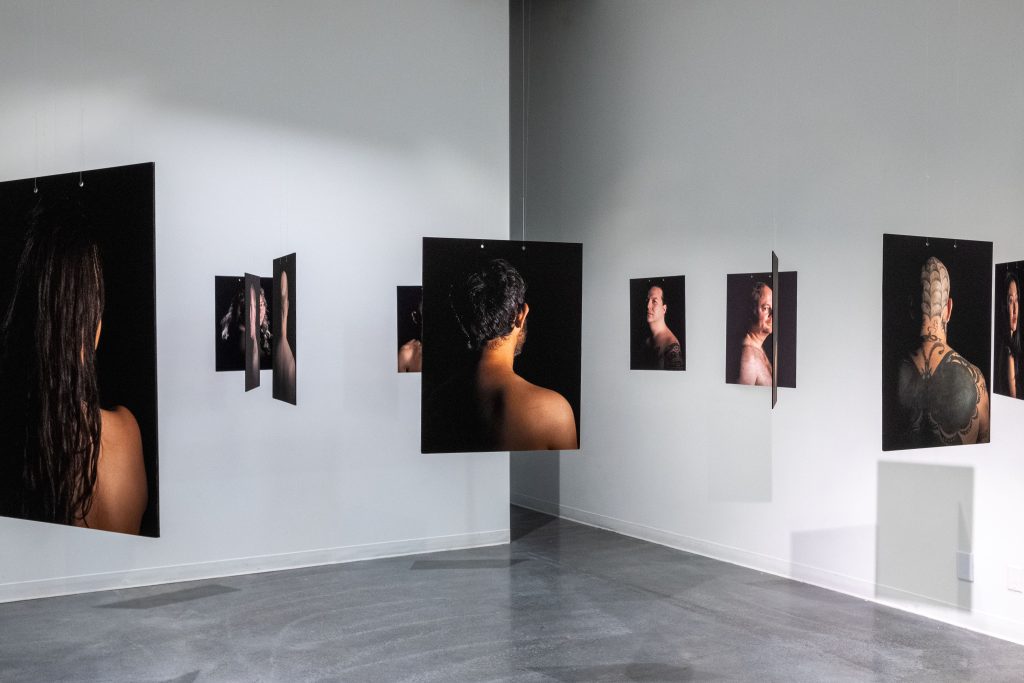
Headspace, 16 double sided 20″x16″ panels, archival inkjet prints, 4 channel – 13:55min audio loop, ECU.
Special thanks to all of my sitters who volunteered their time on this project as well as Tyler Roth, voice actor. This project would not exist without the support from my community who values openness about mental health.
